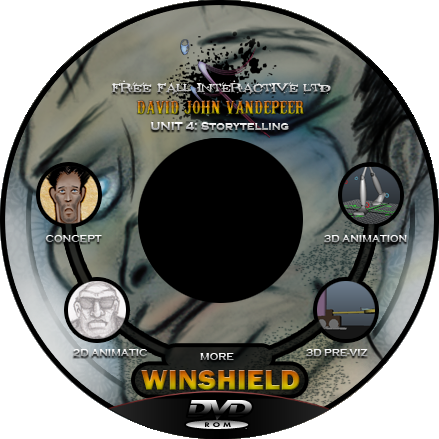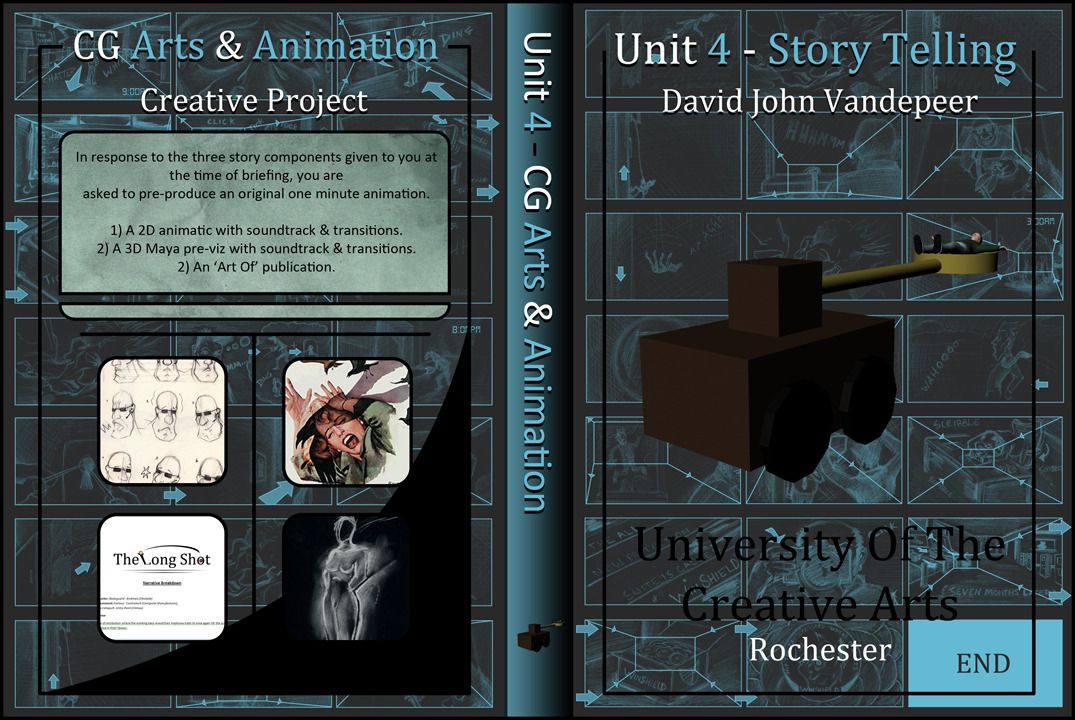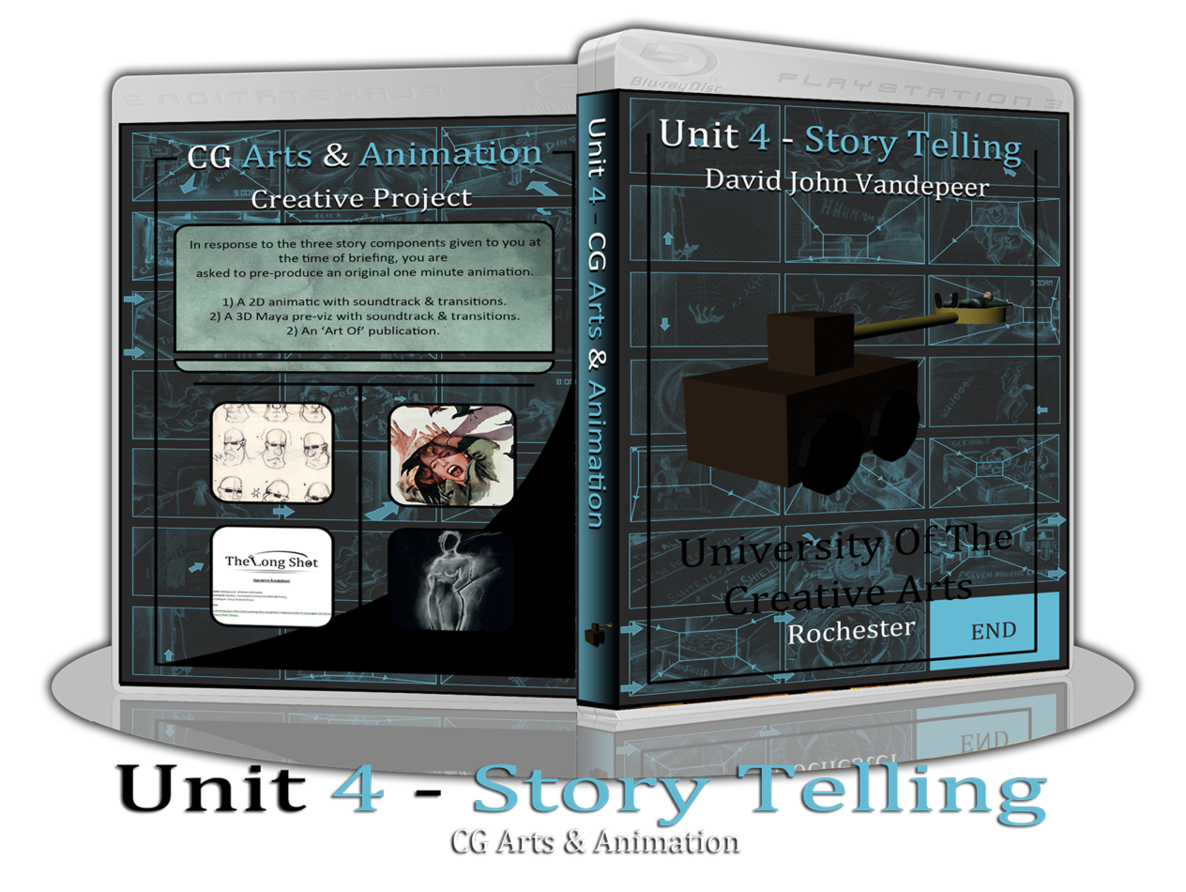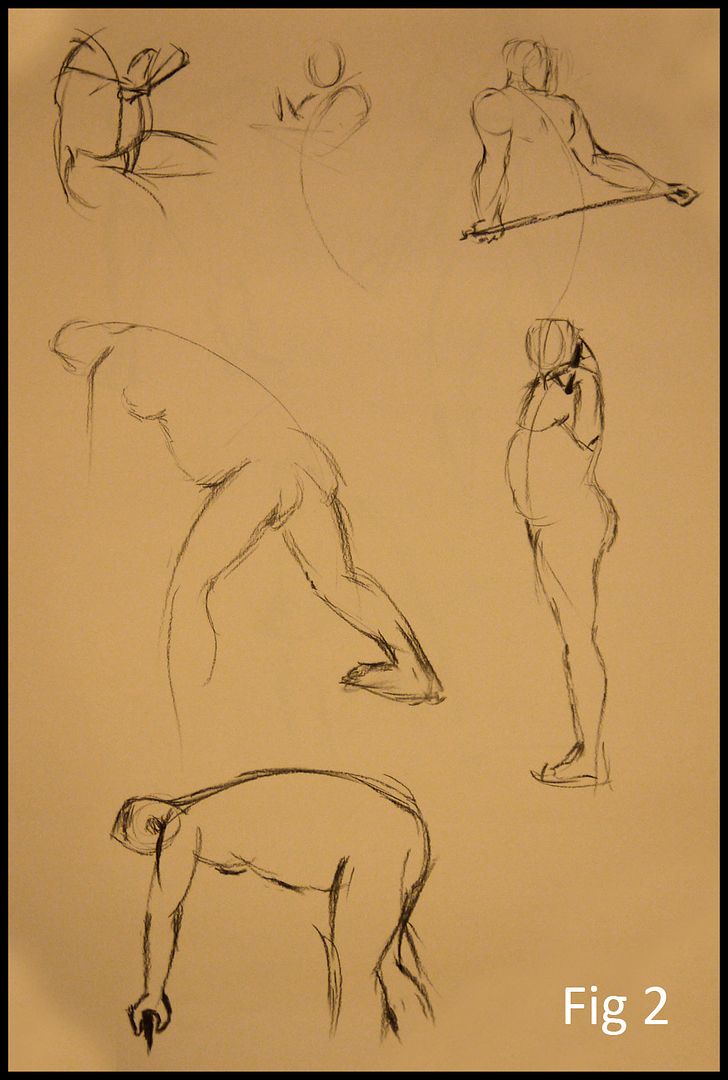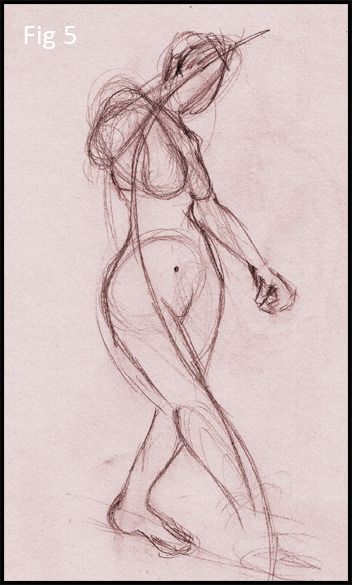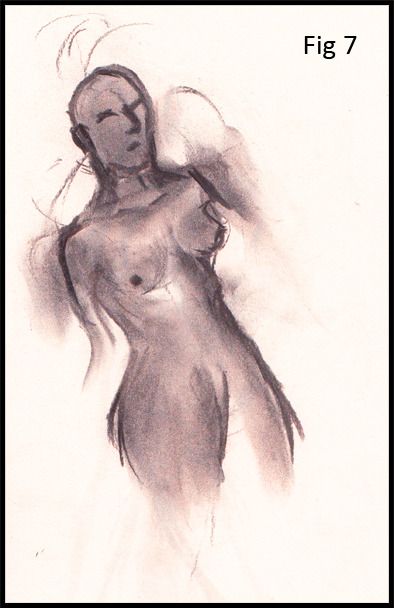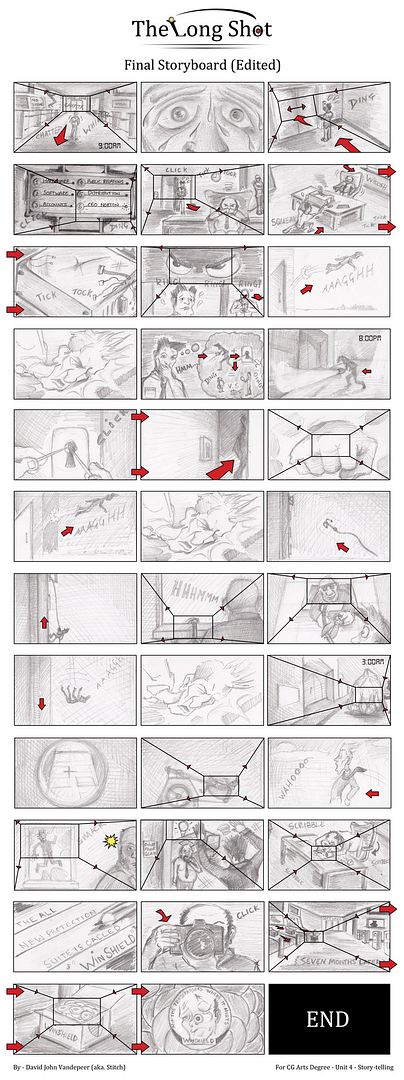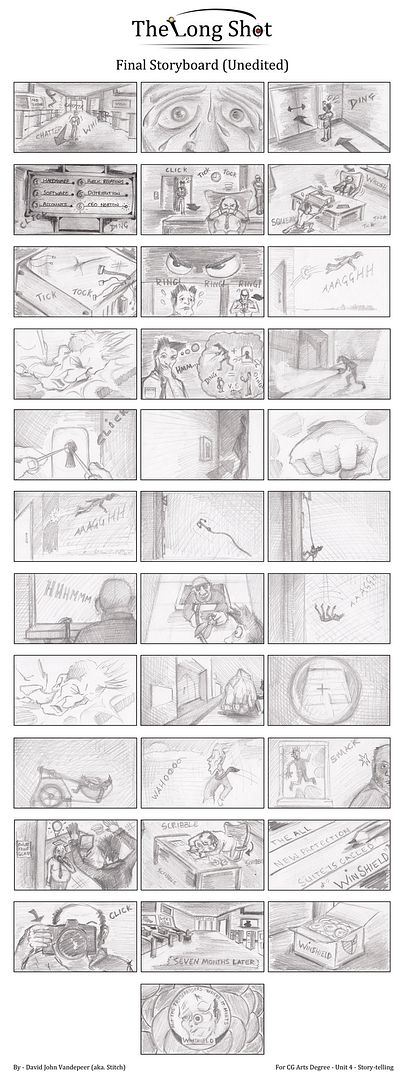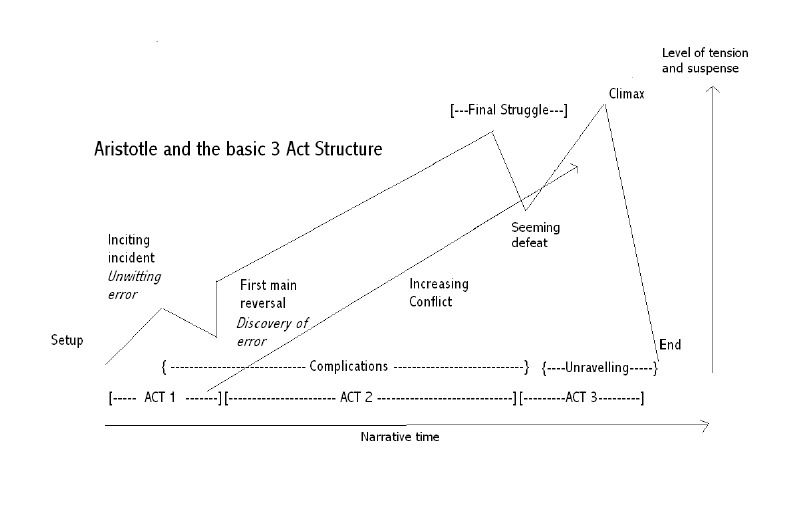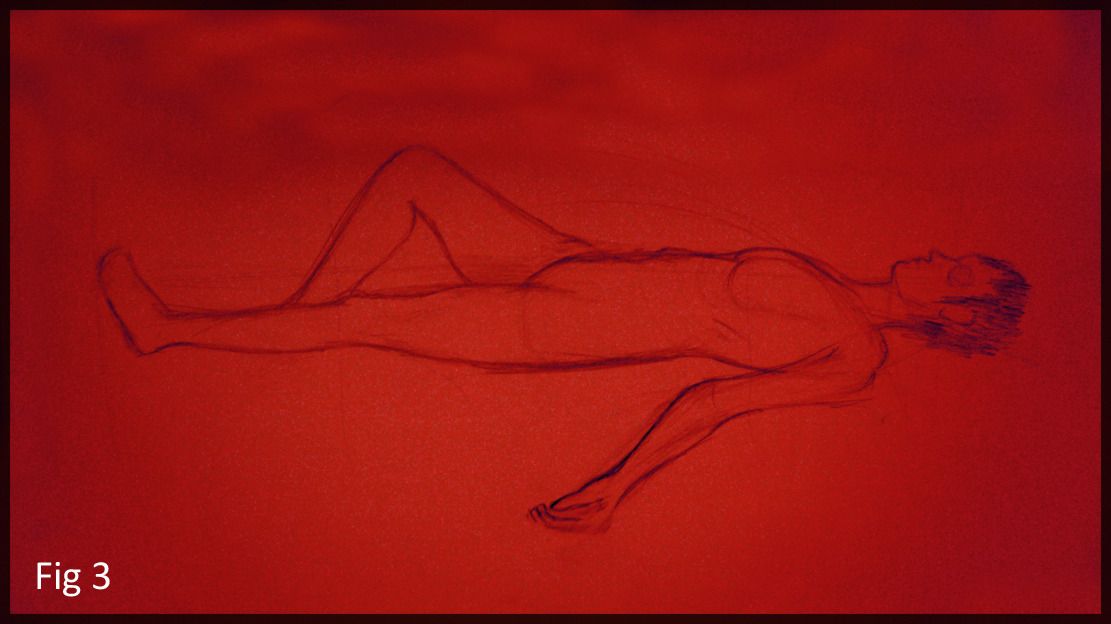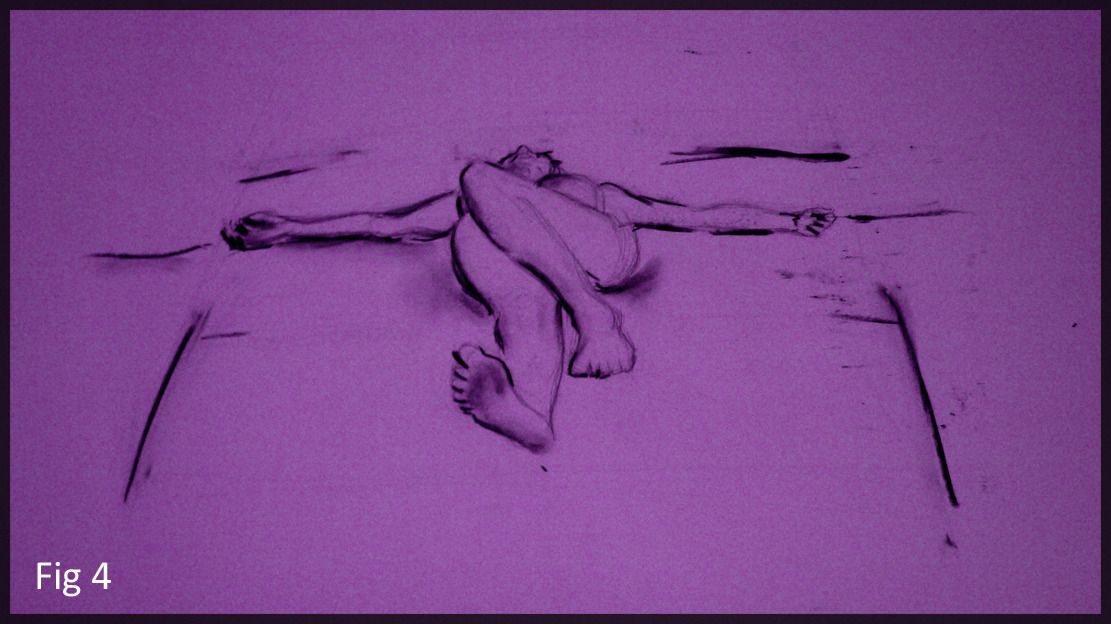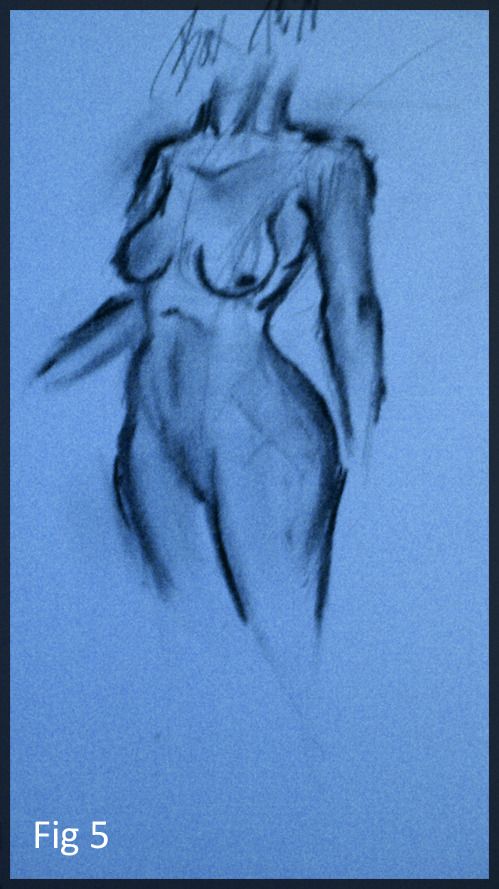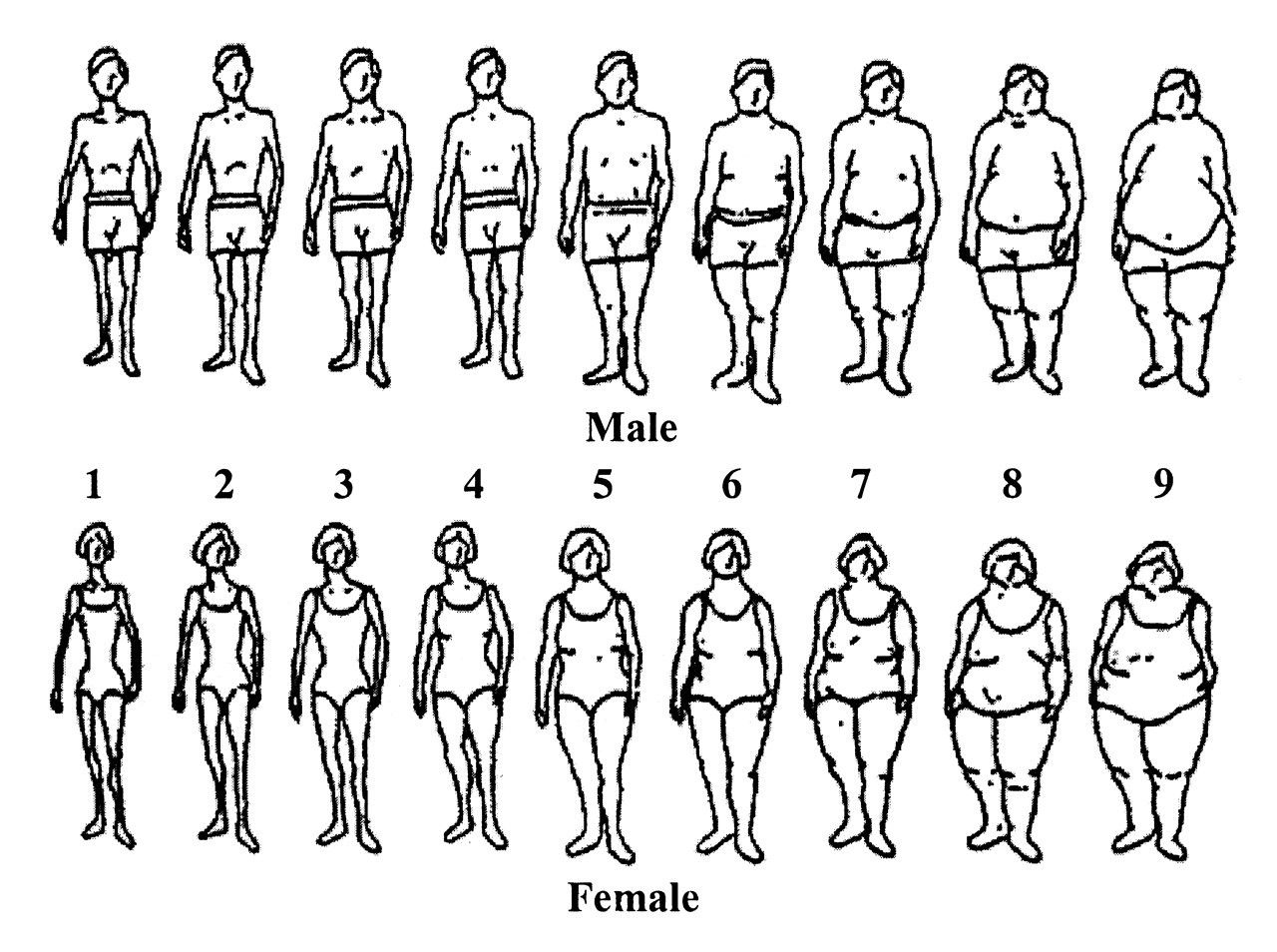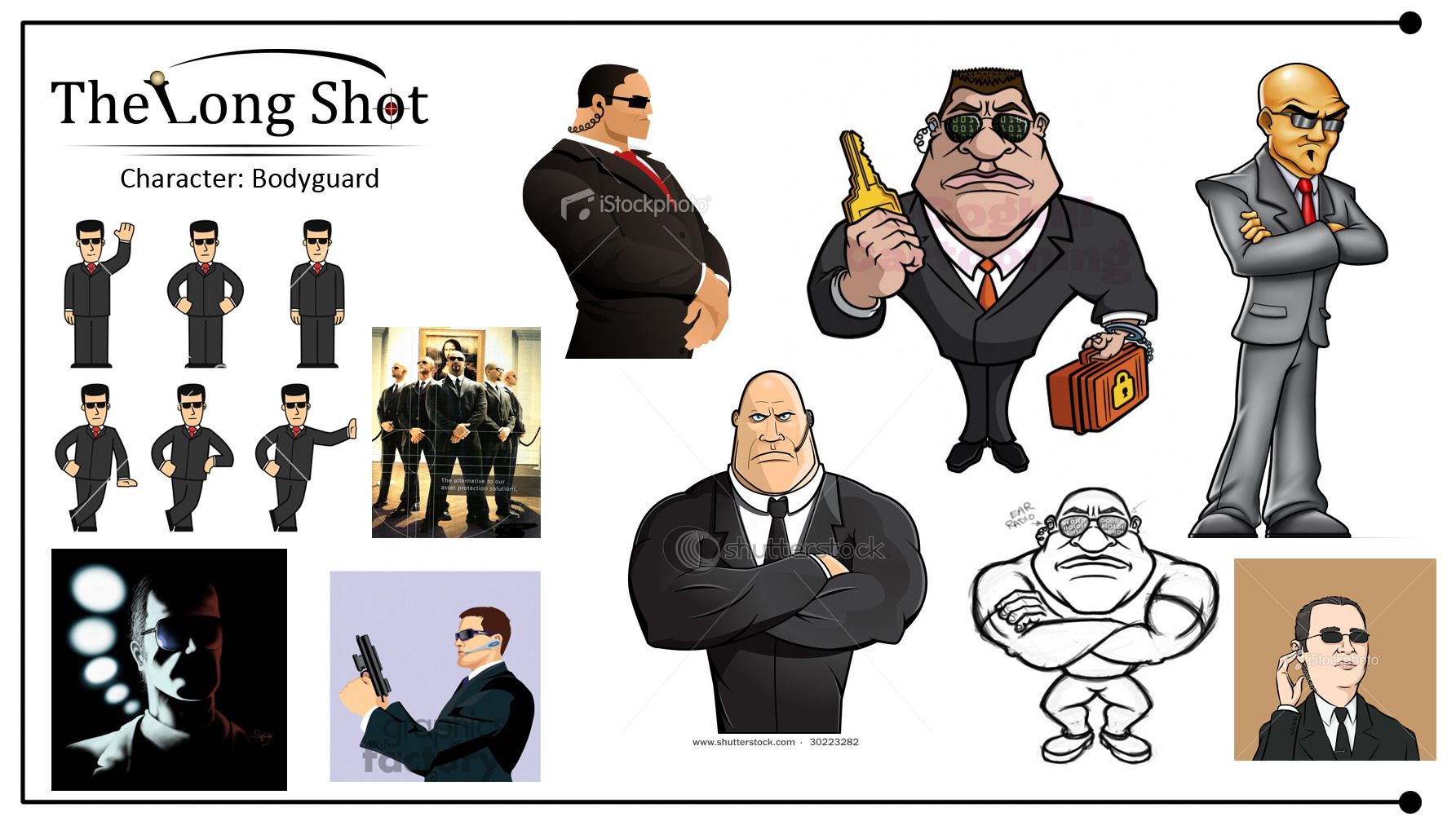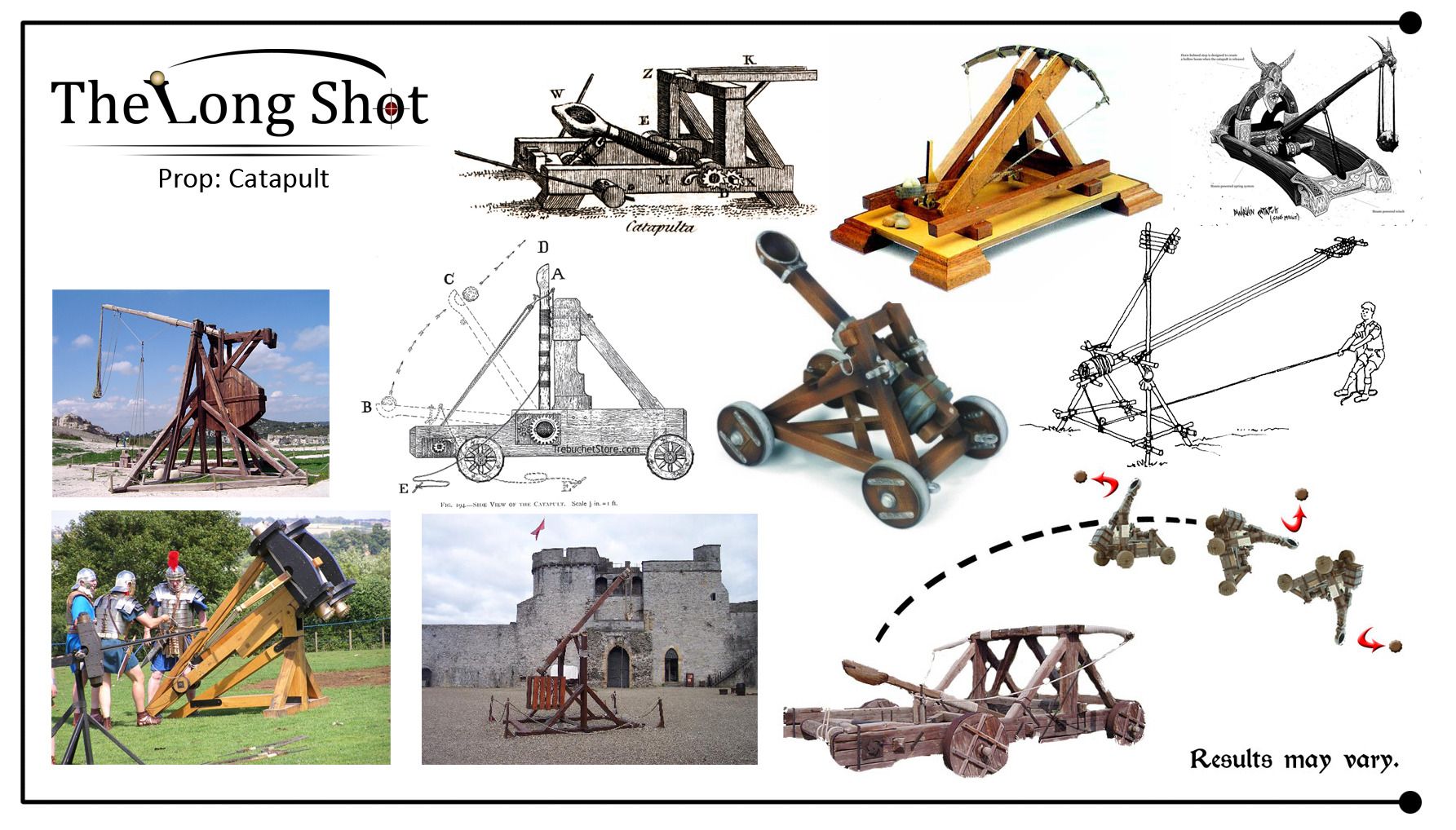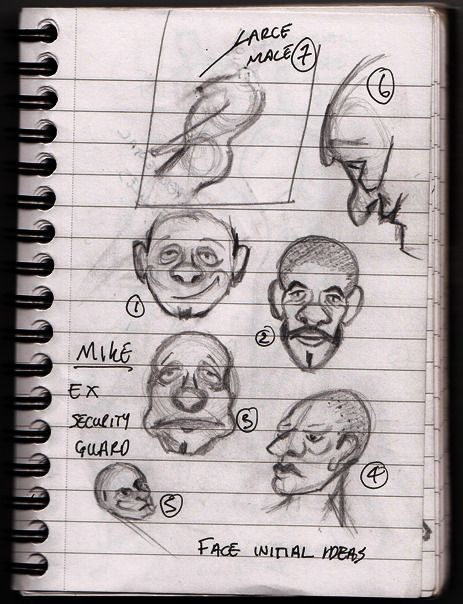Hello Everyone,
Just thought I would post my new DVD stuff up here for this Unit. Another check box exercise but I am rather proud of this design. Kind of went with a bit of a tron vibe, not sure why but I like the way my storyboards now make up the cover. It feels more... authentic shall we say & conveys what this unit was about if the title didn't already...
I do wonder If I will get all of these discs back one day, it would be nice to have a little collection of my own work. I guess at the end of the day it's up to Phil, I may just return to hassle see if that helps steer his decision if it is in fact a "No".
Anyway onto the disc artwork:
The image above is my disc submission artwork, I kind of tarted up the last panel of my storyboard it felt poetic to use the disc as a Winshield CD. Suffice to say I did and then slapped my traditional branding over the top. I like it, certainly works better then I thought it would...
Next comes my case cover, as you can see the illuminum blue is really effective here. It feels kind of weird looking at it almost in xray form, still it is an effective design for this particular brief. I'm not sure if the entire story can be seen on the cover... My guess is not...
Last but not least is the case in all of its standing glory. I couldn't resist putting the birds image on the case, it makes me chuckle a little... I don't think I'll look at birds the same way again.
Well not long till the Crit now, I still have a couple of final character images and environment to make. Hopefully I can wrap that up tomorrow, tonight I still have a 3D modelling video to get cracking on... wish me luck.
Take it easy!
Over & Out,
xXStItChXx
Wednesday 29 February 2012
Unit 4: Story Telling - Life Class Week 11 & 12
Hello Everyone,
Been meaning to post this up for a while now but have had a few issues on this end hence why I have been MIA. My dog hasn't bee doing too good so I've been feeling very unpreductive just constantly walking him hoping hes gonna be okay. Still I'm doing my best to put that to the side and get down to the last day or so of development.
I have quite a few posts to still put up, one of which is my treatment and new character profiles. Hopefully they will follow tonight, I just found out my power is being cut for 7 or so hours tomorrow so I'm working through the night so I can sleep through the waste of time.
Anyway enough moaning, lets get onto life class...
Figure 1 (above) shows the quick sketch phase of week 11, we are still very much working on the realms of perspective and how much of a nightmare it can be. But this was just to warm up mainly, to get the mind around the figure in a quick and orderly fashion...
Figure 2 (above) shows more speed sketches, I actually found it easier to identify the centre line and how the spine was bending to build the pose. After all we are not drawing the model here we are drawing the action and the force that the action is creating. Force that is driven by a line of direction.
Figure 3 (above) was once again more speed sketches, in this case I made it a point to try and strive for more detail which required more confidence in my lines. I knew not to aim for so many, the shape is what is important. Block it out with shades of colour which charcoal is ideal for.
Figure 4 (above) came from the lessons learnt above. The first still had a lot of focus on line but I began to step away and try to let the shape speak to me not the line. This is what created the second image on the page... completely devoid of line just shapes with my centre line still directing the gesture.
Figure 5 (above) was built from my own need to understand the gesture line. Which flows clearly through this image, I wanted to look at the perspective of the line and how it could shape the body. It had great results as this image feels like it could walk off of the page. I am quite proud of this image to say the least...
Figure 6 (above) was to understand the gesture line from a static stance. This is much more difficult as a dynamic pose is composed of movement. What I wanted to convey with this image was the curve of her front which could easily be identified by her gesture. It was difficult but I think it's getting there...
Figure 7 (above) was me rebelling slightly. I wanted to understand the tone a little more. The lights and dark's can elude me sometimes, the purpose here was not to nail the entire body, but to understand what tone is happening on her chest. It was rather difficult but I like how it kind of blends off into nothing... something about it...
Figure 8 (above) was a difficult concept indeed. Not only was the pose dynamic but there was some severe perspective going on here. I kept the sketch loose, but dropping illustrating the force of gravity on her chest and arms. To look at it now it feels very zombie, but it feels very dynamic I have to say.
Anyway, that should conclude life class for this unit, I guess we will have to see how I get on this time. We are just going to have to let loose and finally chillax on crit day.
Take it easy everyone!
Over & Out,
xXStItChXx
Been meaning to post this up for a while now but have had a few issues on this end hence why I have been MIA. My dog hasn't bee doing too good so I've been feeling very unpreductive just constantly walking him hoping hes gonna be okay. Still I'm doing my best to put that to the side and get down to the last day or so of development.
I have quite a few posts to still put up, one of which is my treatment and new character profiles. Hopefully they will follow tonight, I just found out my power is being cut for 7 or so hours tomorrow so I'm working through the night so I can sleep through the waste of time.
Anyway enough moaning, lets get onto life class...
Figure 1 (above) shows the quick sketch phase of week 11, we are still very much working on the realms of perspective and how much of a nightmare it can be. But this was just to warm up mainly, to get the mind around the figure in a quick and orderly fashion...
Figure 2 (above) shows more speed sketches, I actually found it easier to identify the centre line and how the spine was bending to build the pose. After all we are not drawing the model here we are drawing the action and the force that the action is creating. Force that is driven by a line of direction.
Figure 3 (above) was once again more speed sketches, in this case I made it a point to try and strive for more detail which required more confidence in my lines. I knew not to aim for so many, the shape is what is important. Block it out with shades of colour which charcoal is ideal for.
Figure 4 (above) came from the lessons learnt above. The first still had a lot of focus on line but I began to step away and try to let the shape speak to me not the line. This is what created the second image on the page... completely devoid of line just shapes with my centre line still directing the gesture.
Figure 5 (above) was built from my own need to understand the gesture line. Which flows clearly through this image, I wanted to look at the perspective of the line and how it could shape the body. It had great results as this image feels like it could walk off of the page. I am quite proud of this image to say the least...
Figure 6 (above) was to understand the gesture line from a static stance. This is much more difficult as a dynamic pose is composed of movement. What I wanted to convey with this image was the curve of her front which could easily be identified by her gesture. It was difficult but I think it's getting there...
Figure 7 (above) was me rebelling slightly. I wanted to understand the tone a little more. The lights and dark's can elude me sometimes, the purpose here was not to nail the entire body, but to understand what tone is happening on her chest. It was rather difficult but I like how it kind of blends off into nothing... something about it...
Figure 8 (above) was a difficult concept indeed. Not only was the pose dynamic but there was some severe perspective going on here. I kept the sketch loose, but dropping illustrating the force of gravity on her chest and arms. To look at it now it feels very zombie, but it feels very dynamic I have to say.
Anyway, that should conclude life class for this unit, I guess we will have to see how I get on this time. We are just going to have to let loose and finally chillax on crit day.
Take it easy everyone!
Over & Out,
xXStItChXx
Unit 4: Story Telling - Review - Alfred Hitchcock's The Birds

Figure 1. The Birds Poster Art
“The birds” is a film that is Iconic for its stylised bird montages. While one does not doubt that this film has a place as the “what if” of natural disaster, it is quite easy to misinterpret some of the cutting methods. The plot of the film also feels a little dry which could have began later than it did, if it was not for Hitchcock’s need to make the opening scene a bird shop.
•Directed by: Alfred Hitchcock
•Written by: Daphne Du Maurier & Evan Hunter
•Cast: Rod Taylor as Mitch Brenner, Tippi Hedren as Melanie Daniels, Jessica Tandy as Lydia Brenner, Suzanne Pleshette as Annie Hayworth, Veronica Cartwright as Cathy Brenner & Ethel Griffies as Mrs. Bundy
•Genre: Horror, Mystery, Suspense & Classics
•Duration: 119 Minutes (aprox)

Figure 2. "A little birdie told me”
A young and foxy platinum blond Melanie Daniels is visiting a friend’s pet shop when she bumps into acquaintance Mitch who states that he is there for love birds. In a rather unbelievable twist Melanie decides to jot down his licence plate and stalk Mitch to his country side villa near the sea. What Melanie does not know is that a bird attack is about to happen for reasons unknown and is seemingly instigated by her arrival in town. Staying for a day turns into a weekend when the bird attacks require the boarding of windows. Neatly summarised the bird’s could peak interest but much is to be desired from the film’s opening which one could feel is a little forced. Variety Staff observes:
“Aside from the birds, the film belongs to Hedren, who makes an auspicious screen bow. She virtually has to carry the picture alone for the first 45-minute stretch, prior to the advent of the first wave of organized attackers from the sky.” (Variety Staff: 1962)One would have to agree that “The Birds” takes a long time to get going, the opening of the film feels as though it brings nothing to the table other then Hitchcock’s need to tie the term “bird” into his opening scene. One could admire the cast’s chemistry which is rich & inspires curiosity particularly from Mitch Brenner (played by Rod Taylor) but nothing else really happens. One even questions why after a chance meeting a rich girl would travel such a great distance just to belittle someone else. One can appreciate the slight of comedy but one cannot help shake the feeling that the film would have best been started in the riverside town with a vivacious Melanie arriving into town to deliver love birds.

Figure 3. "A gull hit her”
One can only express true admiration when one considers the visuals at work in the birds, which each shot feeling very much like it is a flurry with flapping wings. The sound design plays to its strengths and does so well that one believes a bird is in the room with them. One particular moment of note is when Melanie is pecked near to the death by the flying beasts in absolute silence which is daunting in itself. The phone box is another scene of note when Melanie’s putrid red nails expel as if they were a sign of the birds aggression. In this respect one could draw the conclusion that the birds has inspired these avian predators in past and present media, one of note is most certainly the resident evil series. Ken Hanke observes:
“I’m not personally as jazzed about the fairly late in the day The Birds (1963) as I’m supposed to be, but I recognize the film’s importance—and its technical accomplishment. (I perhaps appreciate the latter even more after being subjected to the zombie crows in Resident Evil: Extinction this week.)”. (Hanke: 2007)In truth Resident Evil had adopted avian predators dating back to the early Sega Saturn games in which undead birds would lay in wait for the game avatar to appear to peck them to death. Having seen the birds it is quite remarkable that the idea for the most part originated with this film. One cannot help but feel inspired to know the journey in which this venture has taken. The birds may have dated but one cannot take what Hitchcock achieved with this outing, a truly original idea that would transcend for generations & may do so for more & more.

Figure 4. “It’s the end of the world”
If truth be told the film does set itself up as that of a natural disaster, especially when one considers the rather daunting petrol station explosion which runs very much like chemical spill or overturned bus. Freud’s Uncanny feels as though that has a part to play also, particularly with the abandoned streets or rooms (which are commonly full and uncannily empty). Still by the time the credits roll most are still wondering what caused the breakdown of nature which is completely implausible at this point, one can even commend Hitchcock for any explanation would feel as though it was the wrong explanation. John Murray observes:
"The fact that it is never revealed to the audience why normally peaceful birds suddenly start attacking humans is a technique that Hitchcock used frequently in his movies. It is called a MacGuffin (or McGuffin), which Hitchcock defines as "The plot device, of little intrinsic interest, such as lost or stolen papers, that triggers the action.” (Murray: 2011)The Birds is left to the viewers speculation which one would have to say is probably where it is best left. To force an answer would more than likely de-merit the technical achievement of the birds, with that being said one could assume the suspicion surrounding Melanie. In narratives such as this, an atrocity happens to one before everyone else, Zombies are a classic example of this. This as such could inspire an uprising of mob mentality much like Frankenstein’s monster. One could even attribute the boarding up of the house to the former which is commonly done in Zombie films and was done by the Monster of Frankenstein. Still in the case of Zombies one is rarely made aware of the origin but the impending crisis, where as Frankenstein’s monster was seen from beginning to end.
List of Illustrations
Figure 1. The Birds Poster Art. (com) [Online image]. At: https://blogger.googleusercontent.com/img/b/R29vZ2xl/AVvXsEj3Jb47msJsWf4obRq6_1OfusD0hE5wtj1oc1pH-XniyqrQTg-BWy6URS7gX32Z6fLk4-iOQd_VfI47cvqhVD1dvCT4Amx1h8QxdymrEH8P1aL-qhMi6SBPJkUnbHml1nsZkMNmhdJgpck/s1600/The+Birds+Poster.jpg (Accessed on: 26/02/12)
Figure 2. A little birdie told me. (com) [Online image]. At: http://everybookandcranny.files.wordpress.com/2011/01/birds2.jpg (Accessed on: 26/02/12)
Figure 3. A gull hit her. (com) [Online image]. At: https://blogger.googleusercontent.com/img/b/R29vZ2xl/AVvXsEhbegD0vyupGLQVd3BLfQfbOw2Hx3sPK3iJKxuojXnqZm3RxTejzpevIXvGG0Dk47f_hBQh71ue4wW0YYA1WQu3E2iJqK3viu6vhCyvtfHGVxmQ35XhxUbJE5PxJIvPEtFD8yVorMeSzp8/s1600/Original-The-Birds-alfred-hitchcock-1622941-653-353.jpg (Accessed on: 26/02/12)
Figure 4. It’s the end of the world. (com) [Online image]. At:
https://blogger.googleusercontent.com/img/b/R29vZ2xl/AVvXsEhCP0b6BsokD3vGaIuBxCQ1wvW8xJDC2_2m8B_S3IdqLAbrlkXvNUwYrwKcnn81VHq0fFRHcIyrN6Psd1igEqmRSkZGcjrTFqeW-NFwveYHLhZow4SkA83n4E6ibGMOaxgLXafZ2h2lUJ8/s1600/The+Birds+6.jpg (Accessed on: 26/02/12)
Bibliography
Variety Staff. (1962) The Birds Review At:
http://www.variety.com/review/VE1117789283?refcatid=31 (Accessed on: 26/02/12)
Ken, Hanke. (2007) The Birds Review At:
http://www.mountainx.com/movies/review/birds (Accessed on: 26/02/12)
Murray, John. (2011) The Birds FAQ. At: http://www.imdb.com/title/tt0056869/faq
(Accessed on: 26/02/12)
Unit 4: Story Telling - Review - Alfred Hitchcock's Vertigo

Figure 1. Vertigo Poster Art
One could best describe Vertigo as a film that tries to scare its audience from the protagonist’s point of view. One feels the need to mention the rather hellacious perspective of John Stewarts John Ferguson to that of heights. Just gazing over edges can send the viewer of a brief rollercoaster ride of paranoia.
•Directed by: Alfred Hitchcock
•Written by: Alec Coppel & Samuel A. Taylor
•Cast: James Stewart as John "Scottie" Ferguson, Kim Novak as Madeleine Elster, Barbara Bel Geddes as Marjorie "Midge" Wood, Tom Helmore as Gavin Elster, Henry Jones as Coroner & Raymond Bailey as Doctor
•Genre: Drama, Romance, Mystery, Suspense & Classics
•Duration: 128 Minutes (aprox)

Figure 2. "What’s on your mind Gavin?”
Our story begins with a rather uncharacteristic James Stewart taking his leave from the San Francisco PD when a chase goes awry causing him to exhibit sever acrophobia. Having digested this impending situation the viewer is treated to a mystery involving the wife of John’s friend Gavin Elster. At first a rather dry case becomes intense with John realising that the poor Madeleine is exhibiting amnesic fugues. The film works on a number of different levels but what is quite possibly the most interesting feature is how the film completely transforms mid way through. Martyn Glanville observes:
“Vertigo is an enjoyably duplicitous film, full of artificiality in both the film-making (lots of back projection) and the story (things not being what we thought), in other words: pure Hitchcock.” (Glanville: 2000)John Ferguson aka “Scottie” is the primary cause for concern bearing in mind that the beginning of the film portrays him as such a genuinely nice guy. One could say that Hitchcock was trying to show the audience what can happen when a man seeps into his own paranoia, for when we let it consume us we are bound by its function. This is perfectly illustrated by Scotties time spent in the mental hospital unable to break past his own deep seated guilt. One is just left hoping that Scotty will break out of it before the screen fades black & suddenly we realise this isn’t done... not by a long shot.

Figure 3. "Only one is a wanderer, two together are always going somewhere”
Madeline is our stories instigator, Scotties Unicorn – fabled creature impossible to capture. Having mourned her death longingly he gradually sinks even lower by visiting the places she did & doing the things she had done. One only begins to get truly unnerved when Trudy arises on the scene with Scotty flagging her down for a date like a kind of stalker. At this point one can only pity Scotty, completely unable to move past his own need to find a double of Madeline. Once again this harkens back to Hitchcock further exacerbating the character we were able to bond with who is only now a shell of his former self. Roger Ebert observes:
“When he cannot have her, he finds another woman and tries to mold her, dress her, train her, change her makeup and her hair, until she looks like the woman he desires. He cares nothing about the clay he is shaping; he will gladly sacrifice her on the altar of his dreams”. (Ebert: 1996)This speaks volumes for Hitchcock’s need for control over women, specifically in his films. In this instance Scotty is a rendition of Hitchcock, things have to be perfect in every sense. This does not expire with love, one could even consider the tidy way in which Scotty hung an unconscious Madeline’s clothes, even going so far as to undress her. Every detail had to be considered which for a guy like Scotty doesn’t appear to be an issue until his mental breakdown. One could argue that Hitchcock like Scotty didn’t believe in the term “No”. Things had to be right, a need for perfection that could never truly be acquired.

Figure 4. “I wish you’d leave me alone”
One feels the need to end this review by considering Madeline’s identity which was a lie no doubt but one could not help but feel sorry for her despite what she had done. One could even understand her situation to a point, it’s not like she knew she would fall for the man she was conning. Yet out of love she decided to stay & against her will put herself through a complete transformation back to that of Madeline. This could have been Hitchcock’s way of diminishing Trudy’s disguise, hinting that maybe deep down Scotty subconsciously knew it was her all along even before the necklace was revealed. Dennis Schwartz observes:
"Hitchcock forgoes his usual suspense (he gives the twist ending away before the climax) and instead masterfully presents an eerie scenario of a psychologically distraught man caught in a dizzying whirlpool of exploitation and obsession, who lives in a dark dream world where his love is a form of necrophilia for his dreamgirl and he wants only a second chance to redeem himself in the real world.” (Schwartz: 2006)One could not help but believe that if Hitchcock were Scotty then he would not need to believe in a body double. For this one is forced to believe that the Necklace is a play for the viewer to give Scotty an excuse to accept his suspicion. The narrative of Vertigo runs like a game of cat and mouse with a love stricken Madeline running from her ideal love. What one comes to realise is that with Madeline’s death & reincarnation as Judy, the man she loves is transformed as well. One could argue that one’s loss of sanity does cause one to change and in some cases for the worst as is the case of “Scotty” John Ferguson.
List of Illustrations
Figure 1. Vertigo Poster Art. (com) [Online image]. At: http://noscope.com/photostream/albums/various/Vertigo_poster.jpg
(Accessed on: 26/02/12)
Figure 2. What’s on your mind Gavin? (com) [Online image]. At: http://filmladd.com/images/Vertigo_20.jpg (Accessed on: 26/02/12)
Figure 3. Only one is a wanderer, two together are always going somewhere. (com) [Online image]. At: https://blogger.googleusercontent.com/img/b/R29vZ2xl/AVvXsEjBYtRO9zwiPvdQaaHMJol3Cc1TKfQ-cHIErWYe3JPZ8Kjg7tsf1DgsF0ow42cX5oz6tHTYpJcX7vhdYWwvkQggHdwlUez90AB8F3r3YiGGjg4bOQsv9K9zKx8OOPkHC4EbhEskeusSGlU/s400/vertigo+wanderer.jpg (Accessed on: 26/02/12)
Figure 4. I wish you’d leave me alone. (com) [Online image]. At:
https://blogger.googleusercontent.com/img/b/R29vZ2xl/AVvXsEjZwF-pswXDzeVP6ur1odMG7rb2tZAepcok1xmrOekfKzCw67zoten_CmHzrR2A-HESz-499fNavDZTw_t5nrLVZqU4w0vaJWwo7UeqY3tbmstmQGFm950isYTNFhHoQI0PmksItTEwM7yn/s1600/vertigo.bmp (Accessed on: 26/02/12)
Bibliography
Glanville, Martyn. (2000) Vertigo Review At:
http://www.bbc.co.uk/films/2000/12/05/vertigo_1958_review.shtml (Accessed on: 26/02/12)
Ebert, Roger. (1996) Vertigo Review At:
http://rogerebert.suntimes.com/apps/pbcs.dll/article?AID=/19961013/REVIEWS08/401010371/1023 (Accessed on: 26/02/12)
Schwartz, Dennis. (2006) Alfred Hitchcock at his most disturbing. At: http://homepages.sover.net/~ozus/vertigo.htm
(Accessed on: 26/02/12)
Saturday 25 February 2012
Unit 4: Story Telling - Maya Exercises, Week 2 & 3 - Rotation & Force
Hello Everyone,
I finally got around to doing some 3D animation, with the pre-viz finally resolved. The animation tasks have been quite interesting I have to say, there is defiantly a mathematical basis at work in the realm of 3D. With that being said I believe that the world is comprised of mathematical formula... Music is a good example...
Consider plucking strings on a guitar in a correct order creates a chord or tune/scale. A scale which works across every instrument. Why does it work? No idea but its maths... and that's just one example...
Anyway onto the videos, I'll try not to waffle...
This is the final in my initial 3 series of bouncing balls. I wanted to finish the theme in this way before converting to what Alan requires - Playblast animations. Mine hasn't been working so I went scaling the net and eventually found a codec that worked...
This video is my first full play blast outside of the lovely pre-viz stage. It was quite interesting to consider the textures position & how that would deform correctly or incorrectly. People still say that the bouncing ball is key to animation & I have most certainly come to agree...
The pendulum swing as I understand it is driven by rotation but I felt as though force has to be considered for the rotation to play an integral role. The force is indicated by the delay of the rotational swing strategically spaced to function to weight.
Last but not least comes the paperclip chain, created from rotation. The sneaky thing here is the delay between the swing of each clip that gives the true indication of weight. The copying and pasting of key frames particularly interested me in this video, a very handy time saver.
Well that's it for this post, I have 2 more Maya tutorials to complete by the end of this Unit which I will have done by next week (at some point). I hope everyone else is having fun out there :)
Take it easy!
Over & Out,
xXStItChXx
I finally got around to doing some 3D animation, with the pre-viz finally resolved. The animation tasks have been quite interesting I have to say, there is defiantly a mathematical basis at work in the realm of 3D. With that being said I believe that the world is comprised of mathematical formula... Music is a good example...
Consider plucking strings on a guitar in a correct order creates a chord or tune/scale. A scale which works across every instrument. Why does it work? No idea but its maths... and that's just one example...
Anyway onto the videos, I'll try not to waffle...
This is the final in my initial 3 series of bouncing balls. I wanted to finish the theme in this way before converting to what Alan requires - Playblast animations. Mine hasn't been working so I went scaling the net and eventually found a codec that worked...
This video is my first full play blast outside of the lovely pre-viz stage. It was quite interesting to consider the textures position & how that would deform correctly or incorrectly. People still say that the bouncing ball is key to animation & I have most certainly come to agree...
The pendulum swing as I understand it is driven by rotation but I felt as though force has to be considered for the rotation to play an integral role. The force is indicated by the delay of the rotational swing strategically spaced to function to weight.
Last but not least comes the paperclip chain, created from rotation. The sneaky thing here is the delay between the swing of each clip that gives the true indication of weight. The copying and pasting of key frames particularly interested me in this video, a very handy time saver.
Well that's it for this post, I have 2 more Maya tutorials to complete by the end of this Unit which I will have done by next week (at some point). I hope everyone else is having fun out there :)
Take it easy!
Over & Out,
xXStItChXx
Unit 4: Story Telling - "The Long Shot" Previz & Overlay Animatic
Hello Everyone,
Spent a chunk of yesterday finishing off the animatic which wound up taking all day. I was also walking between the computer and the toilet, been feeling super crap. Still I am glad that I have actually completed this, its been a lot of commitment with a lot of ups & downs.
There are actually 2 videos here with one showing the animatic overlayed onto the previz, this is how I managed to sync up the previz with the sounds in the premiere pro file without changing a thing. All it required was counting frames which is quite easy once you get the hang of it.
Anyway without any further ado I give you my previz & animatic overlay.
Firstly my full previz is above, this took a lot longer then expected but after making 30 or so scenes I started getting the hang of it. It was actually more fun combining my animatic with my previz (the video below). Cant believe I've reached this stage already, I had more days pencilled down for this task, just more time to perfect my artwork :P
The video above shows my animatic overlay previz, I knocked the opacity of the 3d layer down so you can lightly see the original animatic underneath. I like this better then having the animatic in the corner, it allows me to see how the scene works more vividly.
Well I think this concludes this little post, I have reviews to get cracking on tonight & then I start work on Alan's 3D Maya exercises. We are going to have to see how I actually get on, 3D tends to soak up hours if you let it... I learnt that from Unit 3.
Hope you are all having as much fun as I have been.
Take it easy!!
Over & Out,
xXStItChXx
Spent a chunk of yesterday finishing off the animatic which wound up taking all day. I was also walking between the computer and the toilet, been feeling super crap. Still I am glad that I have actually completed this, its been a lot of commitment with a lot of ups & downs.
There are actually 2 videos here with one showing the animatic overlayed onto the previz, this is how I managed to sync up the previz with the sounds in the premiere pro file without changing a thing. All it required was counting frames which is quite easy once you get the hang of it.
Anyway without any further ado I give you my previz & animatic overlay.
Firstly my full previz is above, this took a lot longer then expected but after making 30 or so scenes I started getting the hang of it. It was actually more fun combining my animatic with my previz (the video below). Cant believe I've reached this stage already, I had more days pencilled down for this task, just more time to perfect my artwork :P
The video above shows my animatic overlay previz, I knocked the opacity of the 3d layer down so you can lightly see the original animatic underneath. I like this better then having the animatic in the corner, it allows me to see how the scene works more vividly.
Well I think this concludes this little post, I have reviews to get cracking on tonight & then I start work on Alan's 3D Maya exercises. We are going to have to see how I actually get on, 3D tends to soak up hours if you let it... I learnt that from Unit 3.
Hope you are all having as much fun as I have been.
Take it easy!!
Over & Out,
xXStItChXx
Wednesday 22 February 2012
Unit 4: Story Telling - "The Long Shot" Animatic Final Version
Hello Everyone,
Well I can say that today has been very fun & a little challenging. Finding the resources such as sound etc, is probably what took the longest. In the end I decided to record some of the stuff myself (your just going to have to guess which ones I recorded).
I think this version of the video flows quite nicely but I guess we will have to see what the final verdict is on D-Day. I may have more time left then I thought as I severely wanted to overestimate this task after the last one.
My strategy this time is simple, get the main objective & then get the others. I refuse to be sitting there on crit day unprepared.
I think this animatic communicates everything well & give or take 7 seconds is within the 1 minute guideline. I will check this with Phil which even if it was a problem, the worst case would only have me trimming the length of some scenes.
Well I hope anyone around has watched & enjoys this little story, thanks for every ones aid in getting it finalised. For those of you that are curious about the music it is:
Mysterious Fortune by Shaun Frearson at Premiumbeat.com.
Take it easy everyone!!
Over & Out,
xXStItChXx
Well I can say that today has been very fun & a little challenging. Finding the resources such as sound etc, is probably what took the longest. In the end I decided to record some of the stuff myself (your just going to have to guess which ones I recorded).
I think this version of the video flows quite nicely but I guess we will have to see what the final verdict is on D-Day. I may have more time left then I thought as I severely wanted to overestimate this task after the last one.
My strategy this time is simple, get the main objective & then get the others. I refuse to be sitting there on crit day unprepared.
I think this animatic communicates everything well & give or take 7 seconds is within the 1 minute guideline. I will check this with Phil which even if it was a problem, the worst case would only have me trimming the length of some scenes.
Well I hope anyone around has watched & enjoys this little story, thanks for every ones aid in getting it finalised. For those of you that are curious about the music it is:
Mysterious Fortune by Shaun Frearson at Premiumbeat.com.
Take it easy everyone!!
Over & Out,
xXStItChXx
Unit 4: Story Telling - "The Long Shot" Animatic Current Development
Hello Everyone,
Just thought I would post the animatic developments. I have the transitions pretty much where I want just adding sound now mainly. I purchased some music loops from Premiumbeat.com purely because I thought the track was perfect for this little animatic.
The sound effects are currently being applied and are incomplete (as no doubt you can tell). It's quite fun I have to say, I just worry that it moves a little fast but I still think the story is pretty evident. There has already been cutting to bring the size down to a minute I'm hoping Phil will forgive the extra 8 seconds on my video, but I don't want to lose much more.
Anyway the current animatic is below!
Hope you enjoyed it and please feel free to drop your opinions in, you know how I love a bit of feedback! Well I'm going back to it, just thought I would keep you apprised of current developments, I may even sling it into after effects to get some camera shaking going on. We will see...
See you in the funny pages!
Over & Out,
xXStItChXx
Just thought I would post the animatic developments. I have the transitions pretty much where I want just adding sound now mainly. I purchased some music loops from Premiumbeat.com purely because I thought the track was perfect for this little animatic.
The sound effects are currently being applied and are incomplete (as no doubt you can tell). It's quite fun I have to say, I just worry that it moves a little fast but I still think the story is pretty evident. There has already been cutting to bring the size down to a minute I'm hoping Phil will forgive the extra 8 seconds on my video, but I don't want to lose much more.
Anyway the current animatic is below!
Hope you enjoyed it and please feel free to drop your opinions in, you know how I love a bit of feedback! Well I'm going back to it, just thought I would keep you apprised of current developments, I may even sling it into after effects to get some camera shaking going on. We will see...
See you in the funny pages!
Over & Out,
xXStItChXx
Monday 20 February 2012
Unit 4: Story Telling - Final Storyboards (Edited)
Hello Everyone,
Well that took longer then expected & I still don't have a video to show (as of yet). Just finished plotting out the boards tomorrow I will begin serious animation.
To wet your beaks I thought I would post the edited draft which is the same pencil sketches but showing camera & character movement etc. I was going draft a digital sketch version but tbh I like the sketch version, I always say if it ain't broke don't fix it.
Anyway the edit is below:
I'm not sure yet If I have to use this version in my video to demonstrate the placement of cameras. I was kind of hoping I could use the unedited storyboards but I don't know we will have to see.
Regardless I think the storyboards convey the story well & if the transitions I envision work as well as the camera will then I foresee no problems here.
Well I think I will stop waffling.
Take it easy!!
Over & Out,
xXStItChXx
Well that took longer then expected & I still don't have a video to show (as of yet). Just finished plotting out the boards tomorrow I will begin serious animation.
To wet your beaks I thought I would post the edited draft which is the same pencil sketches but showing camera & character movement etc. I was going draft a digital sketch version but tbh I like the sketch version, I always say if it ain't broke don't fix it.
Anyway the edit is below:
I'm not sure yet If I have to use this version in my video to demonstrate the placement of cameras. I was kind of hoping I could use the unedited storyboards but I don't know we will have to see.
Regardless I think the storyboards convey the story well & if the transitions I envision work as well as the camera will then I foresee no problems here.
Well I think I will stop waffling.
Take it easy!!
Over & Out,
xXStItChXx
Unit 4: Story Telling - Final Storyboards (Unedited)
Hello Everyone,
Just thought Id post this up before it slipped my mind or before I got carried away interlinking it. These are my final boards which I think convey the story on image alone (something which I am quite proud of). Some of the more awkward angles were done directly from the mind which is why there may be the odd fault on my part.
I also did some experimentation with pencil tones, my initial sketches were done with a 1b and my ones later were done with a 2b. Not difficult to tell the darker ones are more recent. My next round of images will be edited to show camera & character movement etc. I might not collate these onto the blog until they are animated in the form of a final video.
Well I hope you enjoyed the board, comments are welcome in fact it would be nice to here the story is conveyed nicely now. Now comes the really fun part, adding transitions, sfx & a music track :P I love it!
Thanks everyone for aiding me with advice it has been more then helpful, I will see you all in the funny pages!!!
Over & Out,
xXStItChXx
Just thought Id post this up before it slipped my mind or before I got carried away interlinking it. These are my final boards which I think convey the story on image alone (something which I am quite proud of). Some of the more awkward angles were done directly from the mind which is why there may be the odd fault on my part.
I also did some experimentation with pencil tones, my initial sketches were done with a 1b and my ones later were done with a 2b. Not difficult to tell the darker ones are more recent. My next round of images will be edited to show camera & character movement etc. I might not collate these onto the blog until they are animated in the form of a final video.
Well I hope you enjoyed the board, comments are welcome in fact it would be nice to here the story is conveyed nicely now. Now comes the really fun part, adding transitions, sfx & a music track :P I love it!
Thanks everyone for aiding me with advice it has been more then helpful, I will see you all in the funny pages!!!
Over & Out,
xXStItChXx
Sunday 19 February 2012
Thursday 16 February 2012
Unit 4: Story Telling - Final Act Structure
Three Act Structure
ACT 1
The Setup
• An overcrowded factory floor is seen, a nervous man named Alastair separates from a crowd of machine operators carrying what appears to be a broken computer.
• Alastair steps aboard a lift & chooses the sixth floor – labelled “Jim Norton CEO”.
• Alastair enters the CEO’s pristine office; he creeps towards the middle of the room & places the broken computer on the desk.
Inciting Incident
• The CEO Jim Norton aka “the Tyrant” turns from his window view and glances at the computer and then glances with scorn at a nervous Alastair.
• Alastair runs out of the door in fear, “the Tyrant” signals “the Giant” bodyguard Andreas, who follows Alastair in a fury.
• Andreas picks up Alastair with one hand & throws him outside like a Javelin.
ACT 2
First Main Reversal
• Alastair begins plotting a revenge in his mind (thought bubble) – factory exterior + picking the lock + entering the elevator = Alastair confronting Norton face to face in a fight.
• Alastair returns to the factory at night, he begins picking the lock of the exterior factory door.
• The door opens to Alastair’s surprise, he steps through the door & is met by a giant fist, Alastair is knocked from the door.
The Increasing Conflict
• Alastair notices an open window on the third floor of the Controtech Factory; he throws a rappel hook & begins scaling the building.
• Alastair does not notice that Andreas is pulling him up to the window.
• Andreas cuts the rappel rope in front of Alastair.
• Alastair crashes toward the ground.
ACT 3
Pre-Climax Build
• Alastair returns dragging a massive contraption masked in assorted rags, he rummages under the rags to reveal a retractable viewfinder, he aims the viewfinder at the sixth floor window of the Controtech factory – CEO Norton’s Office.
• Alastair removes the rags from the contraption to reveal a life sized catapult.
Climax
• Alastair jumps on board the catapult and fires himself to the sixth floor of the Controtech factory.
• Alastair impacts the glass like a bug on a wind shield.
Anti Climax
• CEO Norton hears the impact on his window and turns noticing Alastair stuck.
• Norton smiles at Alastair before running back to his desk to finish writing his proposal for a revolutionary firewall which has now been entitled “Win-shield” - thanks to Alastair.
• Norton retrieves a camera and takes a picture of Alastair stuck on the window.
End
• Several months later the factory floor is working full force producing the new must have computer protection Software “Win-shield”.
• The image on the disc cover is of Alastair stuck to Norton’s window with the caption reading:
ACT 1
The Setup
• An overcrowded factory floor is seen, a nervous man named Alastair separates from a crowd of machine operators carrying what appears to be a broken computer.
• Alastair steps aboard a lift & chooses the sixth floor – labelled “Jim Norton CEO”.
• Alastair enters the CEO’s pristine office; he creeps towards the middle of the room & places the broken computer on the desk.
Inciting Incident
• The CEO Jim Norton aka “the Tyrant” turns from his window view and glances at the computer and then glances with scorn at a nervous Alastair.
• Alastair runs out of the door in fear, “the Tyrant” signals “the Giant” bodyguard Andreas, who follows Alastair in a fury.
• Andreas picks up Alastair with one hand & throws him outside like a Javelin.
ACT 2
First Main Reversal
• Alastair begins plotting a revenge in his mind (thought bubble) – factory exterior + picking the lock + entering the elevator = Alastair confronting Norton face to face in a fight.
• Alastair returns to the factory at night, he begins picking the lock of the exterior factory door.
• The door opens to Alastair’s surprise, he steps through the door & is met by a giant fist, Alastair is knocked from the door.
The Increasing Conflict
• Alastair notices an open window on the third floor of the Controtech Factory; he throws a rappel hook & begins scaling the building.
• Alastair does not notice that Andreas is pulling him up to the window.
• Andreas cuts the rappel rope in front of Alastair.
• Alastair crashes toward the ground.
ACT 3
Pre-Climax Build
• Alastair returns dragging a massive contraption masked in assorted rags, he rummages under the rags to reveal a retractable viewfinder, he aims the viewfinder at the sixth floor window of the Controtech factory – CEO Norton’s Office.
• Alastair removes the rags from the contraption to reveal a life sized catapult.
Climax
• Alastair jumps on board the catapult and fires himself to the sixth floor of the Controtech factory.
• Alastair impacts the glass like a bug on a wind shield.
Anti Climax
• CEO Norton hears the impact on his window and turns noticing Alastair stuck.
• Norton smiles at Alastair before running back to his desk to finish writing his proposal for a revolutionary firewall which has now been entitled “Win-shield” - thanks to Alastair.
• Norton retrieves a camera and takes a picture of Alastair stuck on the window.
End
• Several months later the factory floor is working full force producing the new must have computer protection Software “Win-shield”.
• The image on the disc cover is of Alastair stuck to Norton’s window with the caption reading:
“Hit the trespassers where it hurts”.END
Unit 4: Revised 3 Act Structure
Three Act Structure
ACT 1
The Setup
• An overcrowded factory floor is seen, a nervous man named Alastair separates from a crowd of machine operators carrying what appears to be a broken computer.
• Alastair steps aboard a lift & chooses the sixth floor – labelled “6 - Miles Harkin CEO”.
• Alastair is escorted from the lift by Harkins “Giant” bodyguard Andreas.
• Alastair enters the CEO’s pristine office; he creeps towards the middle of the room & places the broken computer on the desk.
Inciting Incident
• The CEO Miles Harkin aka “the Tyrant” turns from his window view and glances at the computer and then glances with scorn at a nervous Alastair.
• Alastair runs out of the door, “the Tyrant” signals Andreas, who follows Alastair in a fury.
• A beaten Alastair exits the ground floor elevator & attempts to re-enter the factory floor which will no longer accept his security card.
• “The Giant” Andreas appears and hands Alastair a piece of paper – his notice which declares that he is being fired.
• An irate Alastair throws the paper to the floor & begins yelling at Andreas.
• Andreas picks up Alastair with one hand & throws him outside like a Javelin.
ACT 2
First Main Reversal
• Alastair returns to the factory at night, he begins picking the lock of the exterior factory door.
• The door opens to Alastair’s surprise, he steps through the door & is met by a giant fist, Alastair is knocked away from the door.
The Increasing Conflict
• Alastair notices an open window on the third floor of the Controtech Factory; he throws a rappel hook & begins scaling the building.
• Alastair does not notice that Andreas is pulling him up to the window.
• Andreas cuts the rappel rope in front of Alastair.
• Alastair crashes toward the ground.
ACT 3
Pre-Climax Build
• Alastair returns dragging a massive contraption masked in assorted rags, he rummages under the rags to reveal a retractable viewfinder, he aims the viewfinder at the sixth floor window of the Controtech factory - CEO Harkins Office.
• Alastair removes the rags from the contraption to reveal a life sized catapult.
Climax/Anti Climax
• Alastair jumps on board the catapult and fires himself to the sixth floor of the Controtech factory.
• Alastair impacts the glass like a bug on a wind shield.
• The boss hears the impact on his window and turns noticing Alastair stuck.
• The boss smiles at Alastair before running back to his desk to finish writing his proposal for a revolutionary firewall which has now been entitled “Win-shield” - thanks to Alastair.
• The boss retrieves a camera and takes a picture of Alastair stuck on the window.
End
• Several months later the factory floor is working full force producing the new must have computer protection Software “Win-shield”.
• The image on the cover is of Alastair stuck to Harkins window with the caption reading:
• His next promotion for the protection software has the tagline:
ACT 1
The Setup
• An overcrowded factory floor is seen, a nervous man named Alastair separates from a crowd of machine operators carrying what appears to be a broken computer.
• Alastair steps aboard a lift & chooses the sixth floor – labelled “6 - Miles Harkin CEO”.
• Alastair is escorted from the lift by Harkins “Giant” bodyguard Andreas.
• Alastair enters the CEO’s pristine office; he creeps towards the middle of the room & places the broken computer on the desk.
Inciting Incident
• The CEO Miles Harkin aka “the Tyrant” turns from his window view and glances at the computer and then glances with scorn at a nervous Alastair.
• Alastair runs out of the door, “the Tyrant” signals Andreas, who follows Alastair in a fury.
• A beaten Alastair exits the ground floor elevator & attempts to re-enter the factory floor which will no longer accept his security card.
• “The Giant” Andreas appears and hands Alastair a piece of paper – his notice which declares that he is being fired.
• An irate Alastair throws the paper to the floor & begins yelling at Andreas.
• Andreas picks up Alastair with one hand & throws him outside like a Javelin.
ACT 2
First Main Reversal
• Alastair returns to the factory at night, he begins picking the lock of the exterior factory door.
• The door opens to Alastair’s surprise, he steps through the door & is met by a giant fist, Alastair is knocked away from the door.
The Increasing Conflict
• Alastair notices an open window on the third floor of the Controtech Factory; he throws a rappel hook & begins scaling the building.
• Alastair does not notice that Andreas is pulling him up to the window.
• Andreas cuts the rappel rope in front of Alastair.
• Alastair crashes toward the ground.
ACT 3
Pre-Climax Build
• Alastair returns dragging a massive contraption masked in assorted rags, he rummages under the rags to reveal a retractable viewfinder, he aims the viewfinder at the sixth floor window of the Controtech factory - CEO Harkins Office.
• Alastair removes the rags from the contraption to reveal a life sized catapult.
Climax/Anti Climax
• Alastair jumps on board the catapult and fires himself to the sixth floor of the Controtech factory.
• Alastair impacts the glass like a bug on a wind shield.
• The boss hears the impact on his window and turns noticing Alastair stuck.
• The boss smiles at Alastair before running back to his desk to finish writing his proposal for a revolutionary firewall which has now been entitled “Win-shield” - thanks to Alastair.
• The boss retrieves a camera and takes a picture of Alastair stuck on the window.
End
• Several months later the factory floor is working full force producing the new must have computer protection Software “Win-shield”.
• The image on the cover is of Alastair stuck to Harkins window with the caption reading:
• Following his successful promotion idea Alastair is given a job back at the Controtech factory running public relations.“Hit the trespassers where it hurts”.
• His next promotion for the protection software has the tagline:
“Lose the Giant body guard - get Win-shield a true Tyrants defence”.
Wednesday 15 February 2012
Unit 4: Story Telling - Life Class Week 10
Hello Everyone,
Just coming in with the latest updates from life class which has been missed I have to say. We got right back into it though by examining foreshortening something that I fear greatly & is probably my biggest weakness.
We had our usual warm up but the main sessions were comprised of us sitting on the floor to draw our subject at a more angular viewpoint. It was interesting thinking of the paper underneath her as grids I never considered that before...
Anyway onto the drawings of the class :)
Figure 1 (above) was the speed sketching stage of our class, requiring us to just get a feel of the gesture portrayed in the model. In hind sight I wish I had considered charcoal for this stage its more ideal for being quick and shows up better then a few rough little lines.
Figure 2 (above) was the same as the above (Fig 1) my paper was out of space so I managed to get 3 more roughs done before we actually moved on to the next stage. The lines were better here but again I consider the forms as shapes and without refining they never end up correct. Making a 2-5 minute time frame a difficulty.
Figure 3 (above) would come next requiring us to consider the form in perspective foreshortening. My angle was relatively flat which made the exposed hand the vital foreshortened point. With that said the hand was quite a difficulty it just wasn't pouring out of my brain correctly. I will be looking into solving this little issue.
Figure 4 (above) was the model in extreme foreshortening (at least from my angle). This was a great test for me which didn't end up too badly when I consider how wrong it was when I began. I even had time to spare for a little charcoal shading which I was rather proud of after it was applied.
Figure 5 (above) was my last sketch of the day and the best part is no one noticed. As everyone was packing away I doodled this into my sketchbook as the model re clothed. Possibly the quickest sketch I have ever done that actually looked correct and while it is missing the head and the legs I think its quite accurate :)
Well this concludes life drawing for another week, I guess we are going to have to see if this little trait improves. My drawing has improved somewhat since starting this course so I'm glad for that.
Well have a good night everyone!
Over & Out,
xXStItChXx
Just coming in with the latest updates from life class which has been missed I have to say. We got right back into it though by examining foreshortening something that I fear greatly & is probably my biggest weakness.
We had our usual warm up but the main sessions were comprised of us sitting on the floor to draw our subject at a more angular viewpoint. It was interesting thinking of the paper underneath her as grids I never considered that before...
Anyway onto the drawings of the class :)
Figure 1 (above) was the speed sketching stage of our class, requiring us to just get a feel of the gesture portrayed in the model. In hind sight I wish I had considered charcoal for this stage its more ideal for being quick and shows up better then a few rough little lines.
Figure 2 (above) was the same as the above (Fig 1) my paper was out of space so I managed to get 3 more roughs done before we actually moved on to the next stage. The lines were better here but again I consider the forms as shapes and without refining they never end up correct. Making a 2-5 minute time frame a difficulty.
Figure 3 (above) would come next requiring us to consider the form in perspective foreshortening. My angle was relatively flat which made the exposed hand the vital foreshortened point. With that said the hand was quite a difficulty it just wasn't pouring out of my brain correctly. I will be looking into solving this little issue.
Figure 4 (above) was the model in extreme foreshortening (at least from my angle). This was a great test for me which didn't end up too badly when I consider how wrong it was when I began. I even had time to spare for a little charcoal shading which I was rather proud of after it was applied.
Figure 5 (above) was my last sketch of the day and the best part is no one noticed. As everyone was packing away I doodled this into my sketchbook as the model re clothed. Possibly the quickest sketch I have ever done that actually looked correct and while it is missing the head and the legs I think its quite accurate :)
Well this concludes life drawing for another week, I guess we are going to have to see if this little trait improves. My drawing has improved somewhat since starting this course so I'm glad for that.
Well have a good night everyone!
Over & Out,
xXStItChXx
Unit 4: Story Telling - Review - Alfred Hitchcock's Rear Window
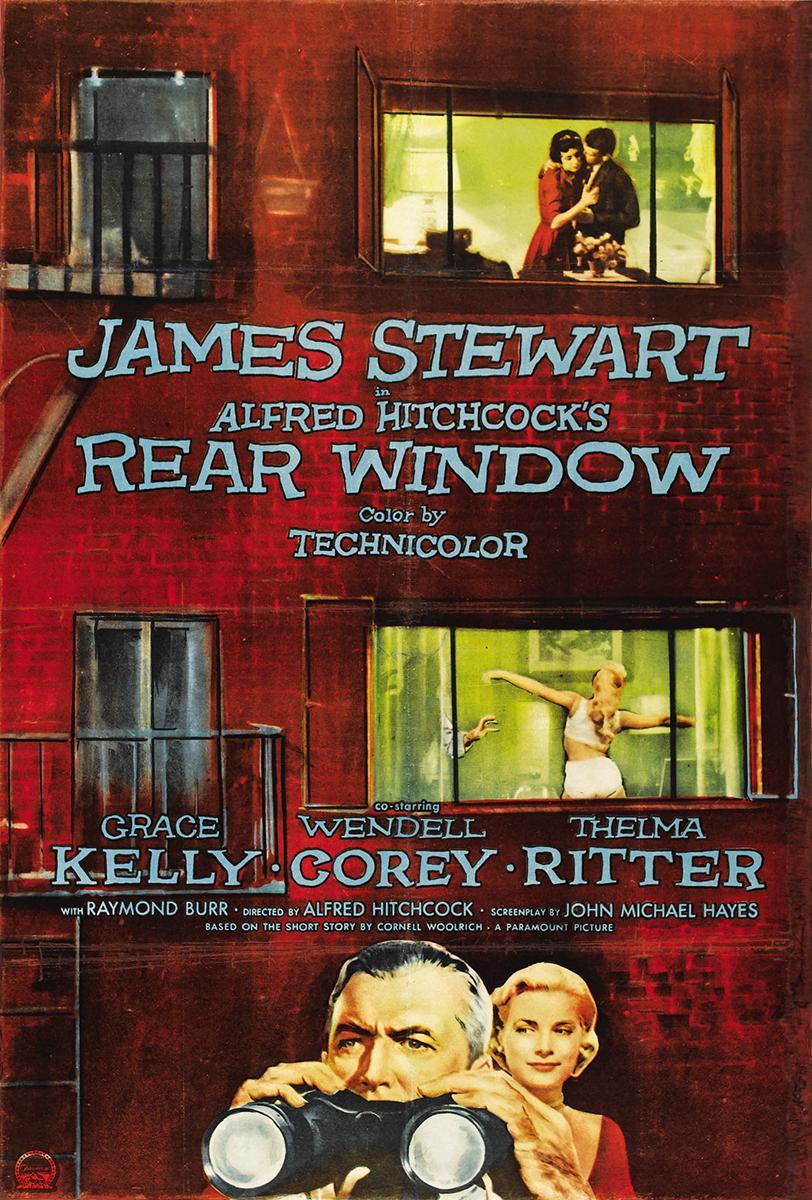
Figure 1. Rear Window Poster Art
Rear Window is a reflection on the viewer; we watch, observe & draw our own conclusions to the prescience in front of us. Once we suspect we rationalise our suspicions with what we consider is undeniable truth. It is of reasonable doubt & our internal need to understand that makes Rear Window a success on multiple levels.
•Directed by: Alfred Hitchcock
•Written by: John Michael Hayes & Cornell Woolrich
•Cast: James Stewart as L.B. Jeffries, Grace Kelly as Lisa Carol Fremont, Wendell Corey as Detective Thomas J. Doyle, Thelma Ritter as Stella the nurse, Raymond Burr as Lars Thorwald & Judith Evelyn as Miss Lonely Heart
•Genre: Drama, Mystery, Suspense & Classics
•Duration: 112 Minutes (aprox)

Figure 2. "We’ve become a race of peeping toms”
...We sure have but rarely do we glare into people’s lives to the point that we cannot look away. LB Jeffries is the exception, bored out of his brains waiting for a Leg injury to heal. Jeffries begins glaring at other people’s lives & using them as one would use channels on a television set. The dancing woman across the way is your erotic channel, the depressed woman downstairs is your drama & the man directly opposite you is the man who just killed his wife. Rear Window is built on the premise of everyone with the exception of the central protagonist who acts as a judge of sorts, weighing right and wrong while breaching the basics of privacy. Reviewer Vincent Canby observes:
“At the time "Rear Window" was first released, there was a certain amount of self-righteous outrage directed at the film's seemingly casual attitude toward voyeurism, sometimes called Peeping Tomism. I was mystified by those criticisms, then and now, and not necessarily because all of us probably tend to peep at one point or another, given the opportunity.” (Canby: 1983)While the argument is valid, one cannot help but feel as though ones right to peep should not be considered controversial especially when someone could be in danger. Hitchcock’s narrative for rear window didn’t necessarily focus on anything then what one would consider as a normal day (with the exception of the suspicious Jewellery salesman played by Raymond Burr). One could argue that Jeffries glances into the other windows just conveyed how normal life could be in contrast with one that is ambiguous. To say that rear window justifies peeping tomism is an under sight because it wasn’t about a nosey neighbour, it was about a guy who had nothing to do but watch other people go about their normal routine.

Figure 3. "Just how would you start to cut up a human body?”
All the other stories displayed by the rear window become secondary when the Jewellery salesman’s wife ends up missing; from there Jeffries begins preparing for late nights with long lenses. The opposing building ends up becoming a focal set where people can be seen coming and going. The windows are conveniently placed to reveal seating positions with an off camera divide between the bedroom & living area. The film is shot entirely from a distance with the close camera cues reserved for the impeding cast of onlookers. The distant shots make the film feel more diverse & separate from the cast an ideal which becomes more terrifying when the cast cross into the opposing building & meet their inevitable undoing. Reviewer Radheyan Simonpillai observes:
“The scariest moment takes place when the murder suspect looks back at Jeff from across the street, threatening his privileged viewing position. And it happens right about the same time as when the audience clues in to that previously mentioned bit of misdirection, when we realize that we’re not just watching a movie but Hitchcock’s looking at us from across the screen”. (Simonpillai: 2010)The more terrifying moment without a doubt is Thorwald’s realisation of Jeffries peeping Tomism something that they both know will not be discussed rationally. What is particularly terrifying here is Jeffries inability to protect himself, a narrative device strategically placed as if the viewer had their feet in concrete. In the end the inevitable conversation between hero & villain only this time with the hero powerless & the villain only too eager to satisfy his curiosity. This moment just makes the viewer consider what they would say to someone they had been spying on, having seen them commit murder. One would have to conclude that there really isn’t anything to say which is conveyed perfectly by Jeffries refusal to speak to Thorwald.

Figure 4. "Maybe I can get him out of that apartment”
Rear Window is a testament to Hitchcock’s vision of effective camera direction to convey narrative. Nothing is exploitive, nobody is even judged succinctly, the adjacent windows are just Hitchcock’s way of editing - no action is happening here, cut, now what’s happening in this window, zoom. The lack of sound to these adjacent lives just adds to the mystery, causing one to subject themselves to an inner monologue in their own minds. Rear Window is bold & it works purely because everything about it is normal in contrast to abnormal, the audience can weigh right and wrong but not act on it, Jeffries can weigh right and wrong & is acting on it. Reviewer David Sterritt observes:
"Rear Window" also played to Hitchcock's fondness for exploring bold stylistic and technical ideas. He relished the challenge of turning traditional cinema on its head - limiting an entire movie to a single room and the view from its window, and filming nearly all the suspense scenes in long-distance shots with a minimum of comprehensible sound.” (Sterritt: 2000)Rear window would be hard to imagine as anything but a film shot from a distance. Some films just have a way of enticing the audience. Rear Window is a testament to those principles thought otherwise as limitations. Where one could see a distant shot as a soundless curiosity Hitchcock could see someone’s life occupying this space for this moment in time for their reasons. Rear Window is not just a story; it’s an array of sub-stories with a central plot. What better way to scare an audience then to show them that if they were to watch someone do something wrong, that the person would see them & inevitably track them down & walk in through the back of the cinema.
List of Illustrations
Figure 1. Rear Window Poster Art. (com) [Online image]. At: http://pics.filmaffinity.com/Rear_Window-982923492-large.jpg (Accessed on: 15/02/12)
Figure 2. We’ve become a race of peeping toms. (com) [Online image]. At: http://www.jonathanrosenbaum.com/wp-content/uploads/2010/02/rear-window2.jpg (Accessed on: 15/02/12)
Figure 3. Just how would you start to cut up a human body? (com) [Online image]. At: http://underthegunreview.net/wordpress/wp-content/uploads/2011/12/3210443739_c7aca180d9.jpg (Accessed on: 15/02/12)
Figure 4. Maybe I can get him out of that apartment. (com) [Online image]. At:
http://5plitreel.files.wordpress.com/2011/05/rearwindow2.jpg (Accessed on: 15/02/12)
Bibliography
Canby, Vincent. (1983) Rear Window - Still a Joy At:
http://www.nytimes.com/library/film/100983hitch-window-reflect.html
(Accessed on: 15/02/12)
Simonpillai, Radheyan. (2010) Rear Window Review At:
http://ca.askmen.com/entertainment/movie/rear-window.html (Accessed on: 15/02/12)
Sterrit, David. (2000) Hitchcock's genius on view in 'Window'. At: http://www.csmonitor.com/2000/0121/p15s1.html
(Accessed on: 15/02/12)
Unit 4: Story Telling - Review - Alfred Hitchcock's Psycho
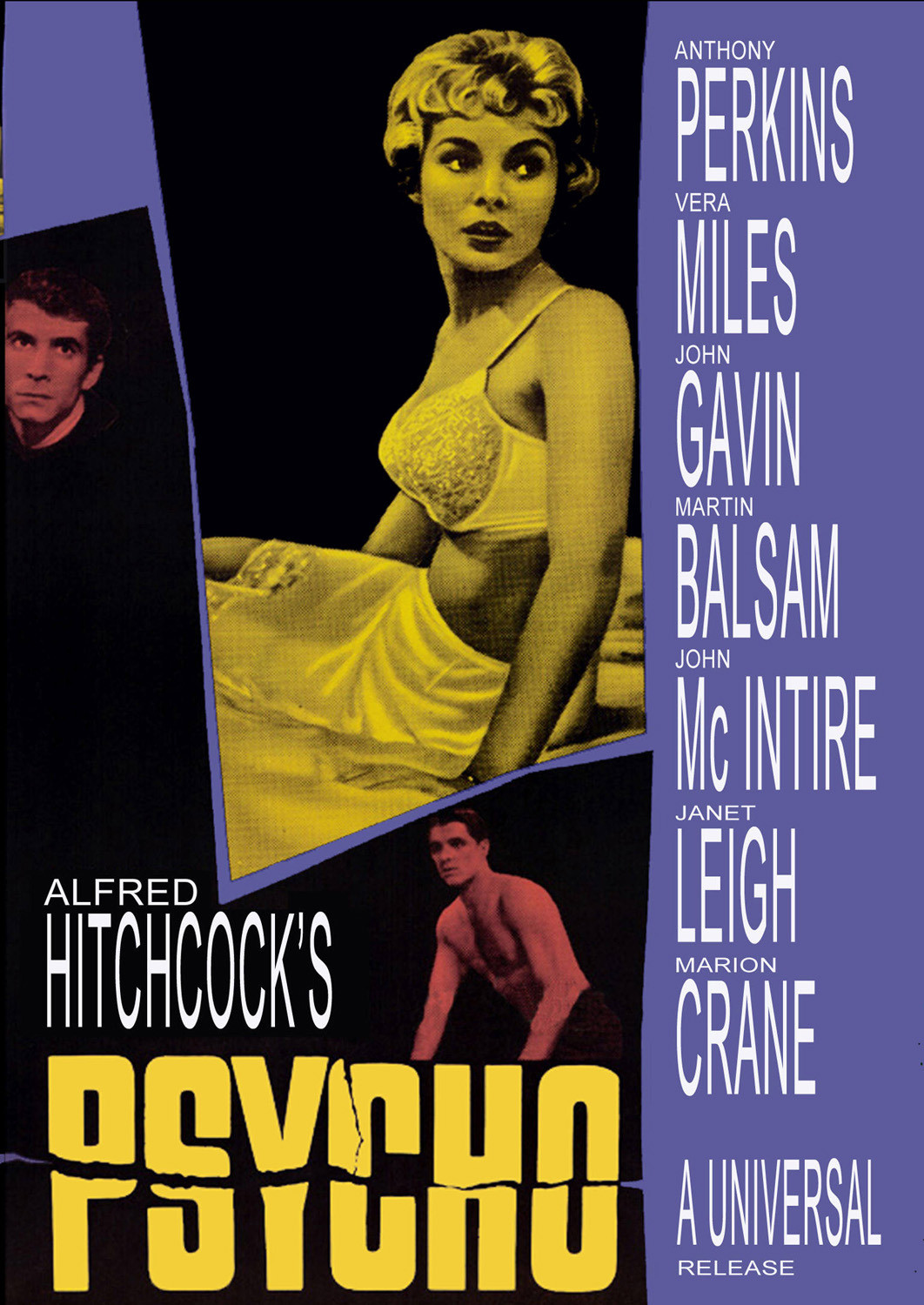
Figure 1. Psycho Poster Art
Psycho works very much like a game of cat & mouse, we know that the inevitable moment of terror is on its way but the moment of action is created with rapid cuts scaring us with threat - a montage of murder as opposed to the act itself. The films inner monologues are also a stroke of genius by Hitchcock, revealing a level of ambiguity from the films cast.
•Directed by: Alfred Hitchcock
•Written by: Joseph Stefano & Robert Bloch
•Cast: Anthony Perkins as Norman Bates, Janet Leigh as Marion Crane, Vera Miles as Lila Crane, John Gavin as Sam Loomis, Martin Balsam as Detective Milton Arbogast & John McIntire as Chambers the sheriff
•Genre: Drama, Horror, Mystery & Suspense, Classics
•Duration: 109 Minutes (aprox)

Figure 2. "A man should have a hobby”
One could assume Psycho to be based on the Freudian psychopath with a rather child like lunatic Norman Bates (Anthony Perkins) immortalising his mother by killing her, only to commit evil acts on her behalf. The true narrative for psycho begins with a rather innocent Lila Crane finding her way to a hotel off the interstate; she is killed shortly after her arrival by a woman when she is bathing. After investigator Milton Arbogast goes missing Marion Crane & Sam Loomis decide to delve deeper by staying at the motel where they meet the true Psycho - Norman Bates. Reviewer David Nusair observes:
“Hitchcock, working from a script by Joseph Stefano, offers up an opening half hour that boasts the qualities of a lurid melodrama and hardly even hints at the horror to follow”. (Nusair: 2010)The whole scenario is creepy mainly because the narrative doesn’t start the way one would imagine & changes significantly in the second act to become something else entirely. Had the film not have the name psycho we would be expecting another type of story. The questions in the name only begin to make themselves apparent with the prescience of a definitive act of murder which is cut in a montage that appear almost directly from storyboard panels. One could not help but notice the sensitivity to nudity that was considered which appears very second in nature when one weighs the fact that a murder has just happened on screen.
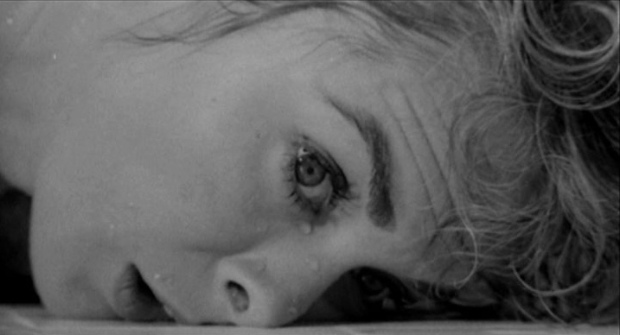
Figure 3. "We all go a little mad sometimes”
The thing that truly defines Psycho is its use of inner monologues a good example of this is where Lila Crane is seen leaving town. She plays out scenarios in her mind which convey people who think of her as suspicious carrying out conversations after she has left, this is very effective as it sparks internal deliberation, things that we feel on a day to day basis. With people weighing good and bad decisions, trying to draw conclusions to those moments that have gone & may never return. In Lila’s case the monologue was of fear, her way of internalising it but in the case of Norman the monologue was strategy of a mental schizophrenic, with a female voice laying out her demands conveying to the audience that Norman Bates has mentally become his mother. Authors Thomas Leitch & Leland Poague observe:
“The missing object that animates suspense throughout the film turns out to have no substantial content. It is nothing but an aspect of Norman’s psyche”. (Leitch & Poague: 2011)This moment is particularly foreign to us as we have nothing to attribute this mental ghost to. The audience are not shown any elements or Normans past just as we wouldn’t to a stranger & it works almost as if no level of reasoning would cause us to think of ourselves as our mothers. The film simply wouldn’t be able to live up to that image which causes one to descend that far. The lack of a physical body confuses us & binds that identity to Norman, her skeleton is nothing more than a trinket that reveals her true death to the audience & Norman as her successor.

Figure 4. "I’ll just sit here and be quiet, just in case they do... suspect me”
Psycho is a well shot & coordinated effort in which nothing is truly gruesome or over staged, one could argue that the film was about the thrill of the scare as opposed to the thrill of the kill. Let us consider the iconic shower sequence which finds Lila Crane killed by a crazed unknown. The act itself was unsuspected mainly because to the audience the only man that could have had the motive to do so was in his house. It is quite possible for the audience to think of him as a suspect but even that thought is obscured when he finds the body & begins cleaning it up in panic. Reviewers Dan Hunter & Jason Knowles observe:
“From the masterful editing of the shower scene montage (in which the knife never directly enters Leigh's flesh), to the quick-cut editing of Arbogast's demise in the Bates house on the hill, Hitchcock meticulously devised a film which "suggested" the individual horror within the minds of each audience member”. (Hunter & Knowles: 1998)The shower scene was edited to reveal limited information to its viewers, which up until that point thought they were enduring an atypical drama albeit with a strange name. The speed of the montage aided in no small part to the music inspires fear. The shots are cut only revealing a hint of suggestion flowing into another rapid movement, no information regarding the identity of the killer is revealed & the dripping blood conveys impact on the skin when it is obvious on reflection that her skin has not been touched. It’s fair to say that on reflection Hitchcock’s decision to hide Lila’s nudity was probably a crude decision to conceal the fact that her body hadn’t been stabbed at all. The truth is in film something doesn’t have to physically happen to convey suggestion, one only needs the right angles & cuts to convey illusion as a reality, Psycho does just that.
List of Illustrations
Figure 1. Psycho Poster Art. (com) [Online image]. At: http://collider.com/wp-content/uploads/pyscho-movie-poster.jpg (Accessed on: 15/02/12)
Figure 2. A man should have a hobby. (com) [Online image]. At: http://www.planetvideo.com.au/blog/2010/06/25/hitchcock-psycho-thumb.jpg
(Accessed on: 15/02/12)
Figure 3. We all go a little mad sometimes. (com) [Online image]. At: http://www.mardecortesbaja.com/PsychoEyeBaja.jpg (Accessed on: 15/02/12)
Figure 4. I’ll just sit here and be quiet, just in case they do... suspect me. (com) [Online image]. At:
http://www.hitchcockfans.com/images/gallery/screenshots/psycho17.jpg
(Accessed on: 15/02/12)
Bibliography
Nusair, David. (2010) Psycho Review At:
http://reelfilm.com/htchcock.htm#psycho (Accessed on: 15/02/12)
Leitch, Thomas & Poague Leland. (2011) A Companion to Alfred Hitchcock, 1st Edition, Published in the United Kingdom (Accessed on: 15/02/12)
Hunter, Dan & Knowles, Jason. (1998) Psycho Review. At: http://www.terrortrap.com/topten/psycho/
(Accessed on: 15/02/12)
Unit 4: Story Telling - Review - Alfred Hitchcock's Rope

Figure 1. Rope Poster Art
A film that sits in a single setting for the entire duration & why not? It works when the story climax is hidden in the room, waiting to be revealed. While the rather trite ideal that murder is an art form feels a little cliché, the need to create a perfect murder is an interesting principle which one could attribute to a form of art. The art itself is to not get caught.
•Directed by: Alfred Hitchcock
•Written by: Arthur Laurents, Hume Cronyn & Ben Hecht
•Cast: James Stewart as Rupert Cadell, John Dall as Brandon Shaw, Farley Granger as Phillip Morgan, Cedric Hardwicke as Mr. Kentley, Constance Collier as Mrs. Atwater & Joan Chandler as Janet Walker
•Genre: Drama, Mystery & Suspense, Classics
•Duration: 80 Minutes (aprox)

Figure 2. "I’ve always wished for more artistic talent”
Rope, a film based on a play with the same name by Patrick Hamilton in the late 1920’s sees a rather sadistic Brandon Shaw & a cowardly Phillip Morgan kill one of their “inferior” high school buddies David Kentley. The film takes a strange twist from there which would usually see the body transported and disposed of, instead the body is left in the room with guests arriving for a dinner party. The viewer feels as though they are eavesdropping on a social event which ends up as more of a calamity then a social occasion, with the story climax buried in a chest. Reviewer Bosley Crowther observes:
“For apart from the tedium of waiting or someone to open that chest and discover the hidden body which the hosts have tucked away for the sake of a thrill, the unpunctuated flow of image becomes quite monotonous”. (Crowther: 2000)The characters do help establish the motivation behind Brandon & Phillip’s need for murder but contribute very little else. Rupert is the most intriguing with his curious remarks that no other party goer has even dared ask. One cannot help but think the narrative was a little restrictive when all one wants after they know the body is in the chest is for someone to find it. This plot device keeps the viewers eyes glued to the screen but only because they have to see when this “perfect murder” falls to pieces, not because the dialogue exchanges offer up anything new or invigorating to the viewer.

Figure 3. "After all, murder is or should be, an art”
What is rather interesting about rope is its long take approach where the camera walks itself into these little clustered conversations as one would as a guest at the party. The static camera positions work just as well specifically in the scene where Mrs. Wilson removes the dinner service from the chest and goes to open it to put some books in. The viewer feels as though they are about to be caught, one almost wants to warn Brandon & Phillip possibly to avoid Mrs. Wilson’s piercing scream when she discovers what is inside that chest. Reviewer Fernando Croce observes:
“Far from just "recording a play," the suffocating long takes enforce ethical contemplation by refusing the relief of a cut (which, in the director's voyeuristic world, would have amounted to looking the other away)”. (Croce: 2006)One could say that for the entire duration of the film Hitchcock just wanted to convey his characters as individuals coming together to engage exposing & crossing their personalities. Regardless, the film is lead by the ghost in the room with most of the conversation coming back to David. The few cuts within the film are usually masked by camera panning into the backs of characters which imminently flow seamlessly from one shot to the next. This method has the advantage of not breaking the audiences attachment to the party, but has the disadvantage of one’s need to turn away having to turn back immediately just in case they were to miss the big climax.

Figure 4. "I think we’re going to get caught”
Quite possibly the most intriguing aspect of the film is the integral question of “why?”. One really does feel the need to understand the motive of the crime, Rope feels as though it diminishes that a little with the characters playing as pawns to a bigger scheme – a scheme that is motiveless other than to just be able to commit the perfect murder. The prescience of Rupert helps one begin to establish the underpinnings of the central characters but to believe one man’s opinions had that much of an impact is a little hard to digest. One would like to think that Hitchcock just wanted to experiment with the construction of his narrative, providing the audience with a reason to keep their eyes pinned to the screen & what better way than to stage a body. Reviewer Ed Howard observes:
“In the case of Rope, certainly, it's fair to call it a warm-up exercise. Hitchcock wanted to see if he could make a film using as few shots as possible, simple as that”. (Howard: 2010)It is fair to say that in an attempt to keep shot counts down Hitchcock decided to show the audience very early on what the story of Rope was about. If people see a murder immediately they will want to understand what came before it (the why, how, etc). From this point on he would have to consider how to keep the setting which is perfect for a dinner party, with his cast coming to him. It was mentioned earlier that the typical approach after a murder is disposing of the body but again that would result in changing scenes & losing his hosts to an “urgent matter”. This could be what inspired the rather sinister idea of “murder as an art form”, his cast are conducting an experiment, almost taunting their friends. This leaves the audience pinned just waiting for that moment when the body is discovered by the inquisitions of mentor Rupert.
List of Illustrations
Figure 1. Rope Poster Art. (com) [Online image]. At: http://4.bp.blogspot.com/_kSp8cgEN2sA/TUla0ojgk0I/AAAAAAAAAhs/0xSPPdGZpQk/s1600/419046231_6c3e606812.jpg (Accessed on: 15/02/12)
Figure 2. I’ve always wished for more artistic talent. (com) [Online image]. At: http://home.comcast.net/~flickhead/rope021.jpg (Accessed on: 15/02/12)
Figure 3. After all, murder is or should be, an art. (com) [Online image]. At: https://blogger.googleusercontent.com/img/b/R29vZ2xl/AVvXsEjmrjiUTQvlE9qEH-OQVwyr_vk8kdS1ysTV_8t3SHMqZzv73eUKXvxXv0CEIVKOMVnLQbpCJXMG0JBGZjhC6xyhZ5_WlzC_L2QsLNDWgSTZ1DH-aW9uMWQtte68QNVVfePcxpsfzIDemhAA/s1600/rope2.jpg (Accessed on: 15/02/12)
Figure 4. I think we’re going to get caught. (com) [Online image]. At:
http://hitchcockandme.files.wordpress.com/2010/09/00201.jpg (Accessed on: 15/02/12)
Bibliography
Crowther, Bosley. (2000) Rope: An Exercise in Suspense. At: http://www.nytimes.com/library/film/081748hitch-rope-review.html
(Accessed on: 15/02/12)
Croce, Fernando. (2006) Rope Review At:
http://www.slantmagazine.com/dvd/review/rope/948 (Accessed on: 15/02/12)
Howard, Ed. (2010) The Conversations: Minor Hitchcock At:
http://www.slantmagazine.com/house/2010/05/the-conversations-minor-hitchcock/ (Accessed on: 15/02/12)
Monday 13 February 2012
Unit 4: Story Telling - Interim Online Review - 14/02/2012 Part 1
Unit 4 - Storytelling - Green Light Review
Maya Exercises:
http://stitchshift.blogspot.com/2012/02/unit-4-story-telling-maya-exercises.html
Premiere Pro Exercises:
http://stitchshift.blogspot.com/2012/02/unit-4-story-telling-premiere-pro.html
http://stitchshift.blogspot.com/2012/02/unit-4-story-telling-premiere-pro_12.html
Maya Exercises:
http://stitchshift.blogspot.com/2012/02/unit-4-story-telling-maya-exercises.html
Premiere Pro Exercises:
http://stitchshift.blogspot.com/2012/02/unit-4-story-telling-premiere-pro.html
http://stitchshift.blogspot.com/2012/02/unit-4-story-telling-premiere-pro_12.html
Sunday 12 February 2012
Unit 4: Story Telling - Premiere Pro Exercise - Advanced Edit
Hello Everyone,
I meant to post this Friday but I didn't get a chance. Basically our second premiere pro lesson had us reflecting further on the initial lesson by forging custom edits from provided footage.
This week we were given a little more range and the option to use the prior weeks Seaworld footage. I strayed from this a little to do some editing for "Monk" a television show that I actually watch at home. It was nice to do some more in depth editing around cutting, merging different angles of different takes.
I felt a little more comfortable this time round, the clips kind of fell together and in spite of the odd sound mishap I think it went together pretty well. I almost forgot the editing was there which I was told is when the job has been done right. People only notice it if it is done wrong.
Anyway, not a lot more to say really. Been working hard all day (you will see what on soon enough).
Take it easy!
Over & Out,
xXStItChXx
I meant to post this Friday but I didn't get a chance. Basically our second premiere pro lesson had us reflecting further on the initial lesson by forging custom edits from provided footage.
This week we were given a little more range and the option to use the prior weeks Seaworld footage. I strayed from this a little to do some editing for "Monk" a television show that I actually watch at home. It was nice to do some more in depth editing around cutting, merging different angles of different takes.
I felt a little more comfortable this time round, the clips kind of fell together and in spite of the odd sound mishap I think it went together pretty well. I almost forgot the editing was there which I was told is when the job has been done right. People only notice it if it is done wrong.
Anyway, not a lot more to say really. Been working hard all day (you will see what on soon enough).
Take it easy!
Over & Out,
xXStItChXx
Thursday 9 February 2012
Unit 4: Story Telling - Supporting Visual Research
Hello Everyone,
I have been indulging on a little light research now that I have began visualising my character. I will upload my drawings once I have all of them, I just want to complete the set and then get opinions.
I will be moving onto drawing the props & factory setting now that I have this research collated. I'm kind of excited actually this will be an interesting way of approaching this brief.
Those that have seen my script (posted prior) you will know where & how this research applies to my narrative & overall 3 act structure.
Research is as follows:
I found this by googling the web and wanted it on file as reference for body types. I have books that do similar things but I feel this image breaks it down to simplistic forms. I just wanted this to set apart my beefy bodyguard from my rather wimpy employee.
The image above is my character: bodyguard research. I wanted to look at cartoon bodyguards this time more then real ones. I am going in for a comedic tale so it only felt right to look at comedic caricature. These are the best ones I could find ranging from exaggerated to real.
The image above is my prop: catapult research. I wanted to consider different types of catapult less conventional then the typical. I favour the one that looks very much like a crossbow, as opposed to the simple projectile. I guess we will have to find out which ends up working for the story.
Last but not least the image above is my environment: computer manufacturer. Most of my reference is comprised of real world images, but as Phil says you need to revert to real world if you are to understand how it functions. I have taken certain components and keyed them for reference this includes the office interior & key card door.
Well this concludes my key visual research for the chosen excerpts, no doubt I will be required to make a final influence map when the Red light crit is due to be in. When that happens I will include references from the other items used for my storyboard.
This concludes my little post for now, I will probably try and catch a few hours I slept the entire evening I think my clock is running backwards.
Take it easy people!
Over & Out,
xXStItChXx
I have been indulging on a little light research now that I have began visualising my character. I will upload my drawings once I have all of them, I just want to complete the set and then get opinions.
I will be moving onto drawing the props & factory setting now that I have this research collated. I'm kind of excited actually this will be an interesting way of approaching this brief.
Those that have seen my script (posted prior) you will know where & how this research applies to my narrative & overall 3 act structure.
Research is as follows:
I found this by googling the web and wanted it on file as reference for body types. I have books that do similar things but I feel this image breaks it down to simplistic forms. I just wanted this to set apart my beefy bodyguard from my rather wimpy employee.
The image above is my character: bodyguard research. I wanted to look at cartoon bodyguards this time more then real ones. I am going in for a comedic tale so it only felt right to look at comedic caricature. These are the best ones I could find ranging from exaggerated to real.
The image above is my prop: catapult research. I wanted to consider different types of catapult less conventional then the typical. I favour the one that looks very much like a crossbow, as opposed to the simple projectile. I guess we will have to find out which ends up working for the story.
Last but not least the image above is my environment: computer manufacturer. Most of my reference is comprised of real world images, but as Phil says you need to revert to real world if you are to understand how it functions. I have taken certain components and keyed them for reference this includes the office interior & key card door.
Well this concludes my key visual research for the chosen excerpts, no doubt I will be required to make a final influence map when the Red light crit is due to be in. When that happens I will include references from the other items used for my storyboard.
This concludes my little post for now, I will probably try and catch a few hours I slept the entire evening I think my clock is running backwards.
Take it easy people!
Over & Out,
xXStItChXx
Tuesday 7 February 2012
Unit 4: Story Telling - "The Long Shot" Idea Version 2
Character: Bodyguard - Andreas (Obstacle)
Environment: Factory - Controtech (Computer Manufacturer)
Prop: Catapult - Entry Point (Climax)
Premise
A tale of retribution where the working class reveal their implosive traits to once again tilt the scales of justice in their favour.
Log Line
Machine operator Alastair wants retribution for getting laid off from his job by infamous corporate tyrant Miles Harkin. The only thing standing in his way is Harkin’s private bodyguard Andreas, a brute who has the brawn of a ship with the size to match. Just how far will Alistair go to come face to face with “the Tyrant”?
Synopsis
Machine operator Alastair is laid off from his job at the “Controtech” factory due to staff cuts imposed by the infamous CEO Miles Harkin a.k.a. “the Tyrant”. Alastair wants revenge on Harkin but to do so he has to get past Harkins pocket-giant Andreas, a bear of a man who is known for his extracurricular activities & cunning. Alastair’s only option is to defy “the Giant” & aim longingly for the window that will eventually lead him to “the Tyrant”.
Three Act Structure
ACT 1
The Setup
• Alastair enters the Controtech factory & scans his ID card which fails to open the door to the factory floor
• An irate Alastair tries swiping the card numerous times with each attempt failing to open the door
Inciting Incident
• “The Giant” Andreas appears wielding a piece of paper
• The paper is Alastair’s notice which declare he is being laid off
• An irate Alastair throws the paper on the floor & begins yelling at Andreas
• Andreas picks up Alastair with one hand & throws him outside like a Javelin
ACT 2
First Main Reversal
• Alastair returns to the factory at night, he begins picking the lock of the exterior factory door
• The door opens to Alastair’s surprise, he steps through the door & is met by a giant fist
• Andreas takes Alastair’s lock pick & re-enters the factory door, locking it behind him
The Increasing Conflict
• Alastair notices an open window on the third floor of the Controtech Factory, he throws a repel hook & begins climbing the building
• Alastair does not notice that Andreas is pulling him up to the window
• Andreas smacks Alastair causing him to fall to the ground
• Andreas retrieves the repel hook & closes the third floor window
Seeming Defeat
• Alastair picks himself up from the floor dazed, he stumbles from the scene in the way in which he came
ACT 3
Pre-Climax Build
• Alastair returns dragging a massive contraption masked in assorted rags, he rummages under the rags to reveal a retractable viewfinder, he aims the viewfinder at the highest window of the Controtech factory
• Alastair removes the rags from the contraption to reveal a life sized catapult
Climax/Anti Climax
• Alastair jumps on board the catapult and fires himself to the top floor of the Controtech factory
• Alastair impacts the glass like a bug on a wind shield
• A sign on the glass reads “Bullet proof glass”
End
• While stuck to the top floor window Alastair see’s Andreas enter & sit at the CEO’s desk
• Andreas sits at the computer and types in the username “Tyrant”
• Alastair then realises that “the Giant” he had been dealing with was the infamous “Tyrant” all along
Environment: Factory - Controtech (Computer Manufacturer)
Prop: Catapult - Entry Point (Climax)
Premise
A tale of retribution where the working class reveal their implosive traits to once again tilt the scales of justice in their favour.
Log Line
Machine operator Alastair wants retribution for getting laid off from his job by infamous corporate tyrant Miles Harkin. The only thing standing in his way is Harkin’s private bodyguard Andreas, a brute who has the brawn of a ship with the size to match. Just how far will Alistair go to come face to face with “the Tyrant”?
Synopsis
Machine operator Alastair is laid off from his job at the “Controtech” factory due to staff cuts imposed by the infamous CEO Miles Harkin a.k.a. “the Tyrant”. Alastair wants revenge on Harkin but to do so he has to get past Harkins pocket-giant Andreas, a bear of a man who is known for his extracurricular activities & cunning. Alastair’s only option is to defy “the Giant” & aim longingly for the window that will eventually lead him to “the Tyrant”.
Three Act Structure
ACT 1
The Setup
• Alastair enters the Controtech factory & scans his ID card which fails to open the door to the factory floor
• An irate Alastair tries swiping the card numerous times with each attempt failing to open the door
Inciting Incident
• “The Giant” Andreas appears wielding a piece of paper
• The paper is Alastair’s notice which declare he is being laid off
• An irate Alastair throws the paper on the floor & begins yelling at Andreas
• Andreas picks up Alastair with one hand & throws him outside like a Javelin
ACT 2
First Main Reversal
• Alastair returns to the factory at night, he begins picking the lock of the exterior factory door
• The door opens to Alastair’s surprise, he steps through the door & is met by a giant fist
• Andreas takes Alastair’s lock pick & re-enters the factory door, locking it behind him
The Increasing Conflict
• Alastair notices an open window on the third floor of the Controtech Factory, he throws a repel hook & begins climbing the building
• Alastair does not notice that Andreas is pulling him up to the window
• Andreas smacks Alastair causing him to fall to the ground
• Andreas retrieves the repel hook & closes the third floor window
Seeming Defeat
• Alastair picks himself up from the floor dazed, he stumbles from the scene in the way in which he came
ACT 3
Pre-Climax Build
• Alastair returns dragging a massive contraption masked in assorted rags, he rummages under the rags to reveal a retractable viewfinder, he aims the viewfinder at the highest window of the Controtech factory
• Alastair removes the rags from the contraption to reveal a life sized catapult
Climax/Anti Climax
• Alastair jumps on board the catapult and fires himself to the top floor of the Controtech factory
• Alastair impacts the glass like a bug on a wind shield
• A sign on the glass reads “Bullet proof glass”
End
• While stuck to the top floor window Alastair see’s Andreas enter & sit at the CEO’s desk
• Andreas sits at the computer and types in the username “Tyrant”
• Alastair then realises that “the Giant” he had been dealing with was the infamous “Tyrant” all along
Unit 4: Story Telling - "The Long Shot" 3 Act Structure
ACT 1
The Setup
• Establishes “Controtech” factory layoffs via newspaper article
• Establishes hate mail introducing burglar protagonists Alastair & Damon
• Reveals blue print plans entitled “The Long Shot Plan A & Plan B”
Inciting Incident
• The blue prints lower revealing the factory in the distance
• A button is pressed causing an explosion near the factory (a distraction)
• Alastair & Damon sneak over to the factory
• Alastair locates the rear door to the factory
ACT 2
First Main Reversal
• Alastair begins picking the lock to the factory rear door, his lock pick breaks
The Increasing Conflict
• Damon reveals a crowbar from his belt; he wedges it into the frame of the door.
• Alastair & Damon begin pulling on the crowbar together to break the door lock
Seeming Defeat
• The crowbar bends leaving Alastair & Damon exhausted & frustrated
ACT 3
Pre-Climax Build
• The security guard returns from the distraction & discovers Alastair resting near the door
• The security guard chases Alastair leaving a crouching Damon near the door entrance
Climax/Anti Climax
• Damon action’s “plan B” pressing a button removing the roof from his truck, revealing a badly built wooden catapult
• Damon climbs on board the catapult and presses the fire button
• The catapult misfires, shooting Damon into the floor
End
• Alastair surveys his partner in crime getting arrested
• Alastair shakes his head & walks off into the night
• A newspaper article “Ex employee caught stealing” with Damon’s mug shot shown
The Setup
• Establishes “Controtech” factory layoffs via newspaper article
• Establishes hate mail introducing burglar protagonists Alastair & Damon
• Reveals blue print plans entitled “The Long Shot Plan A & Plan B”
Inciting Incident
• The blue prints lower revealing the factory in the distance
• A button is pressed causing an explosion near the factory (a distraction)
• Alastair & Damon sneak over to the factory
• Alastair locates the rear door to the factory
ACT 2
First Main Reversal
• Alastair begins picking the lock to the factory rear door, his lock pick breaks
The Increasing Conflict
• Damon reveals a crowbar from his belt; he wedges it into the frame of the door.
• Alastair & Damon begin pulling on the crowbar together to break the door lock
Seeming Defeat
• The crowbar bends leaving Alastair & Damon exhausted & frustrated
ACT 3
Pre-Climax Build
• The security guard returns from the distraction & discovers Alastair resting near the door
• The security guard chases Alastair leaving a crouching Damon near the door entrance
Climax/Anti Climax
• Damon action’s “plan B” pressing a button removing the roof from his truck, revealing a badly built wooden catapult
• Damon climbs on board the catapult and presses the fire button
• The catapult misfires, shooting Damon into the floor
End
• Alastair surveys his partner in crime getting arrested
• Alastair shakes his head & walks off into the night
• A newspaper article “Ex employee caught stealing” with Damon’s mug shot shown
Unit 4: Story Telling - Final Idea
Hello Everyone,
Taking into account yesterdays post I have been thinking up alternative ways... I know everyone loves Idea 4 but what kept plaguing my mind is Mike is acting the role of a Boss meaning he would no longer be acting as a security guard which would cause him to not be the character on the excerpt I received.
As much as it pains me I am again inclined to move away from this idea due to the latter & the fact that in the story of idea 4 the factory isn't a domineering aspect. It could once again be considered as any kind of building.
With all of the above being said I have thought up an alternative which I think will fall into the scope of everything. I also believe this will be better received as a storyboard.
The idea is as follows:
-------------------------------------------------------------------------------------------------------
Character: Bodyguard - Security Guard - Obstacle
Environment: Factory - Containing Money - Macguffin
Prop: Catapult - "Plan B" - Plot Device
Premise
An example of desperation in trying times when logic & crazy blur together ultimately resulting in a crash course to reality.
Log Line
Ex-machine operator Alastair wants retribution for getting fired from his job, he teams up with Damon - a psychotic passing acquaintance. They decide to stage a burglary at their former employ - the local "Controtech" computer manufacturing plant. A feat greatly underestimated...
Synopsis
Ex-machine operator Alastair & ex-floor manager Damon lose their jobs at the “Controtech” factory on the same day. The two acquaintances hatch a plan to break into their former employ to steal the owner’s stash from the wall safe in his office. A week later the pair return in the early hours with a two part plan entitled: “The Long Shot Plan A & Plan B”. While trying to action “plan A” the two are interrupted by a security guard causing the two to split up. Damon actions “plan B” to his own demise, Alastair escapes.
-------------------------------------------------------------------------------------------------------
This idea feels much more alive to me and I can imagine the storyboards to be very concise at telling the story. I have drafted up my 3 act structure which I will post next. It was a hard decision to decide to move on from my original ideas but I wasn't being realistic.
None of them utilised the components of my 3 excerpts I was just trying to tell a story with none of the ingredients provided, just to avoid the comedy genre.
Lesson learnt - sometimes the simplest idea is the best.
Anyway thanks everyone for commenting before, I guess sometimes you just have to go with what feels right.
Over & Out,
xXStItChXx
Taking into account yesterdays post I have been thinking up alternative ways... I know everyone loves Idea 4 but what kept plaguing my mind is Mike is acting the role of a Boss meaning he would no longer be acting as a security guard which would cause him to not be the character on the excerpt I received.
As much as it pains me I am again inclined to move away from this idea due to the latter & the fact that in the story of idea 4 the factory isn't a domineering aspect. It could once again be considered as any kind of building.
With all of the above being said I have thought up an alternative which I think will fall into the scope of everything. I also believe this will be better received as a storyboard.
The idea is as follows:
Character: Bodyguard - Security Guard - Obstacle
Environment: Factory - Containing Money - Macguffin
Prop: Catapult - "Plan B" - Plot Device
Premise
An example of desperation in trying times when logic & crazy blur together ultimately resulting in a crash course to reality.
Log Line
Ex-machine operator Alastair wants retribution for getting fired from his job, he teams up with Damon - a psychotic passing acquaintance. They decide to stage a burglary at their former employ - the local "Controtech" computer manufacturing plant. A feat greatly underestimated...
Synopsis
Ex-machine operator Alastair & ex-floor manager Damon lose their jobs at the “Controtech” factory on the same day. The two acquaintances hatch a plan to break into their former employ to steal the owner’s stash from the wall safe in his office. A week later the pair return in the early hours with a two part plan entitled: “The Long Shot Plan A & Plan B”. While trying to action “plan A” the two are interrupted by a security guard causing the two to split up. Damon actions “plan B” to his own demise, Alastair escapes.
This idea feels much more alive to me and I can imagine the storyboards to be very concise at telling the story. I have drafted up my 3 act structure which I will post next. It was a hard decision to decide to move on from my original ideas but I wasn't being realistic.
None of them utilised the components of my 3 excerpts I was just trying to tell a story with none of the ingredients provided, just to avoid the comedy genre.
Lesson learnt - sometimes the simplest idea is the best.
Anyway thanks everyone for commenting before, I guess sometimes you just have to go with what feels right.
Over & Out,
xXStItChXx
Monday 6 February 2012
Unit 4: Story Telling - Idea 4: Mike Character Head & Form Mock Ups
Hello Everyone,
Got one more post to make, I had a play with some character sketches last night. Just wanted to get an idea for the type of characters I wanted to adopt - I had looked at realism but this didn't feel right for it so I decided to try and add some creative licence to the proceedings.
The images are not perfect but I knocked them up quick & as rough as possible at this point I had no committed to the idea but now that I am I will be delving into these concepts further.
Below are my initial developments from my notepad.
(Image above) I had no idea what I was going to do but I just kept playing around with different types of face deforming the nose mainly. At first I wanted a playfully happy guy but then I felt the doom and gloom approach represented the scroogeness even more. I even began playing with form but 7 was just too real.
From the image above I liked the form of 1 which I actually drew after 2 when considering the male form more. Its still incomplete I just kept turning pages instead of rubbing out - I didn't want to commit so early on in the process. This page was a little static - i wont lie.
The page that followed was more free just looking at the shapes that make the male form. Men have bolstered upper bodies and smaller hips while Women have wider hips and smaller upper bodies, its kind of the opposite of each other when you think about it. I was even able to isolate the make up of the American Dad character - this was just for fun.
Well this concludes my little visual development post (not impressive I know) but I'm just exploring everything that I can. We will have to see what happens next - I'm a little scared but a little excited.
Anyway, take it easy!
Over & Out,
xXStItChXx
Got one more post to make, I had a play with some character sketches last night. Just wanted to get an idea for the type of characters I wanted to adopt - I had looked at realism but this didn't feel right for it so I decided to try and add some creative licence to the proceedings.
The images are not perfect but I knocked them up quick & as rough as possible at this point I had no committed to the idea but now that I am I will be delving into these concepts further.
Below are my initial developments from my notepad.
(Image above) I had no idea what I was going to do but I just kept playing around with different types of face deforming the nose mainly. At first I wanted a playfully happy guy but then I felt the doom and gloom approach represented the scroogeness even more. I even began playing with form but 7 was just too real.
From the image above I liked the form of 1 which I actually drew after 2 when considering the male form more. Its still incomplete I just kept turning pages instead of rubbing out - I didn't want to commit so early on in the process. This page was a little static - i wont lie.
The page that followed was more free just looking at the shapes that make the male form. Men have bolstered upper bodies and smaller hips while Women have wider hips and smaller upper bodies, its kind of the opposite of each other when you think about it. I was even able to isolate the make up of the American Dad character - this was just for fun.
Well this concludes my little visual development post (not impressive I know) but I'm just exploring everything that I can. We will have to see what happens next - I'm a little scared but a little excited.
Anyway, take it easy!
Over & Out,
xXStItChXx
Subscribe to:
Posts (Atom)

